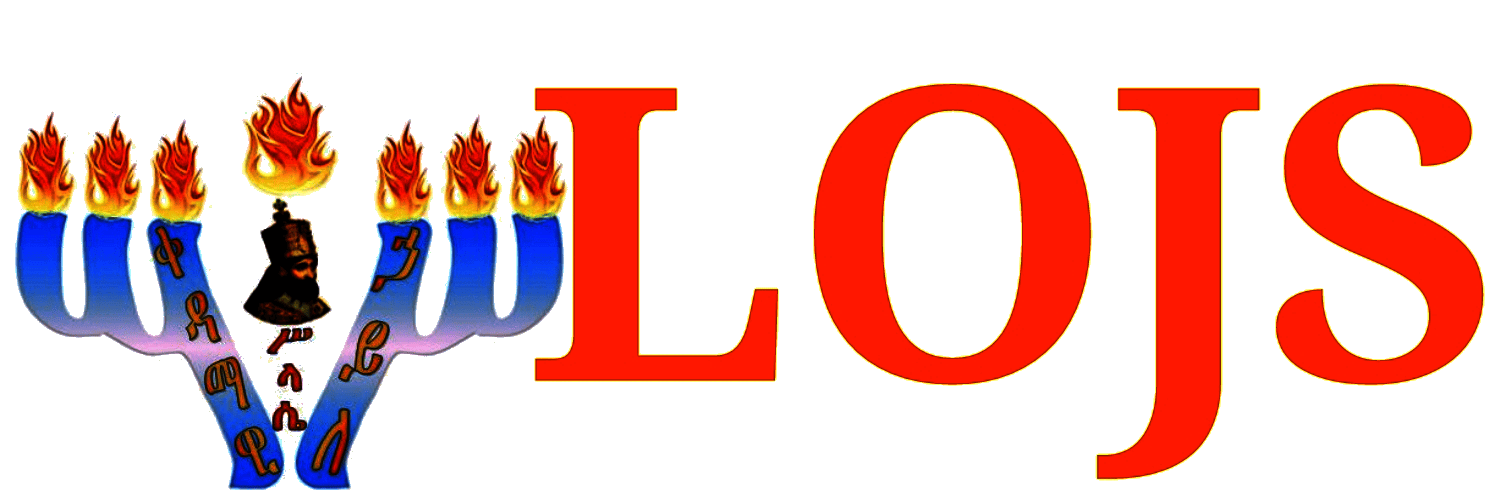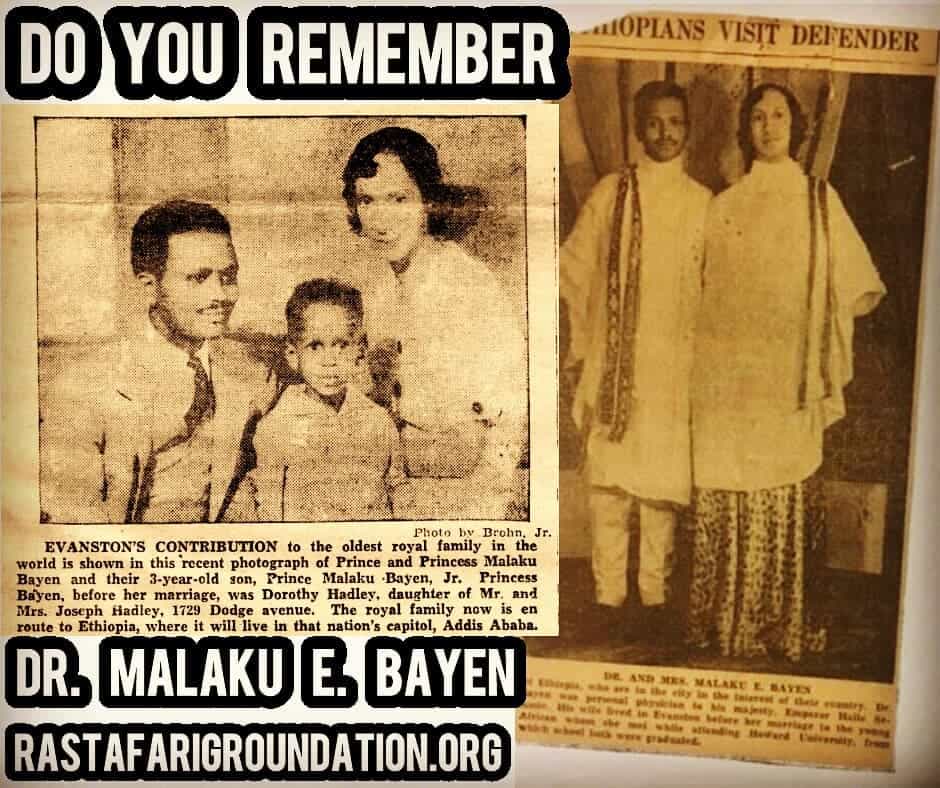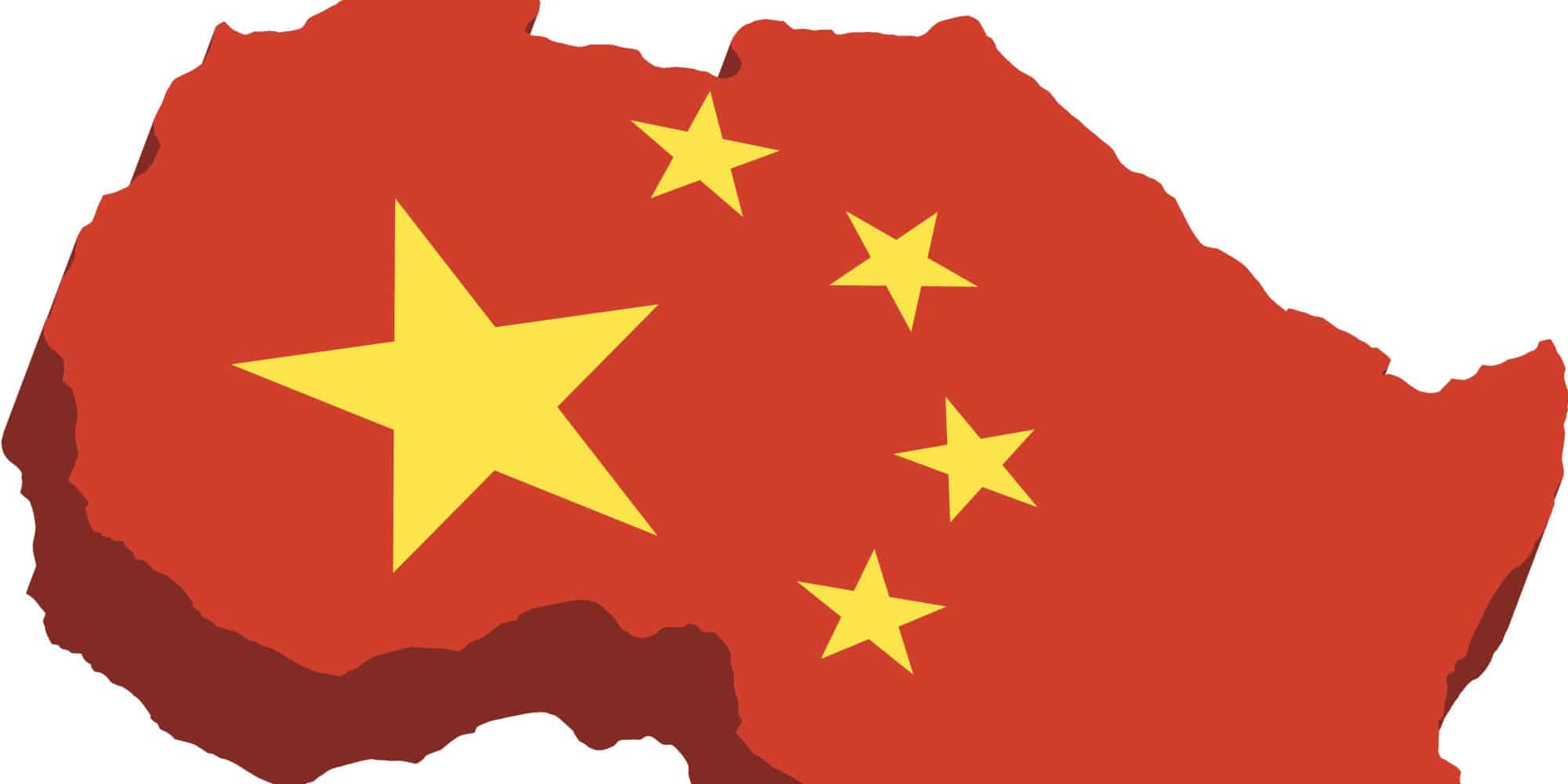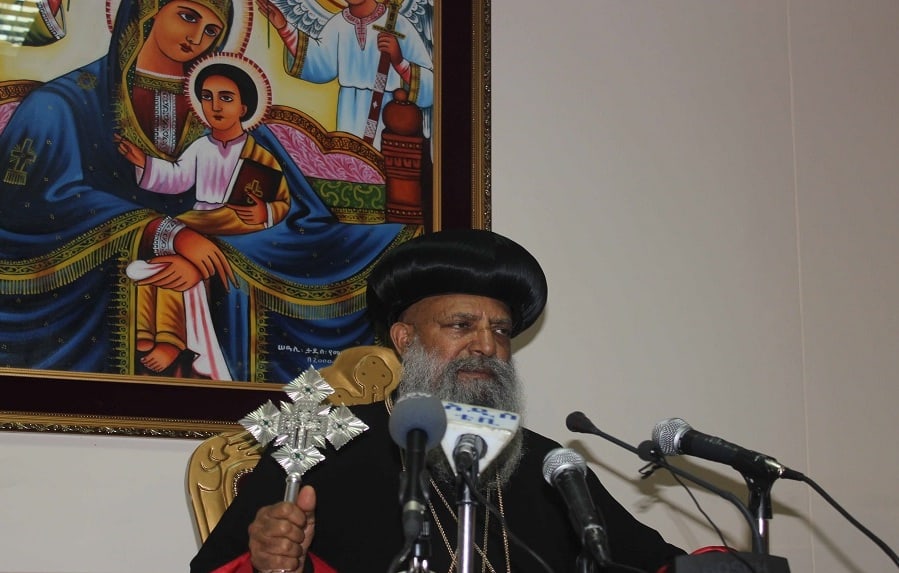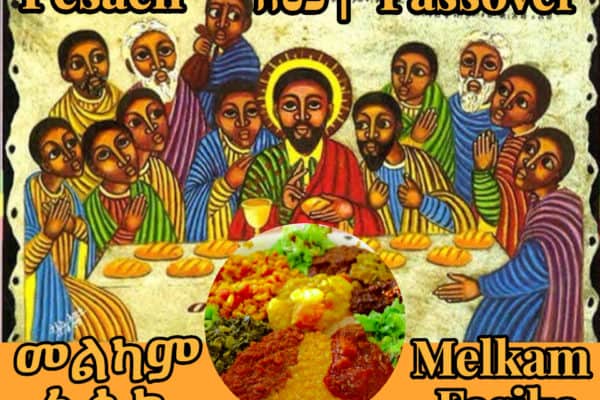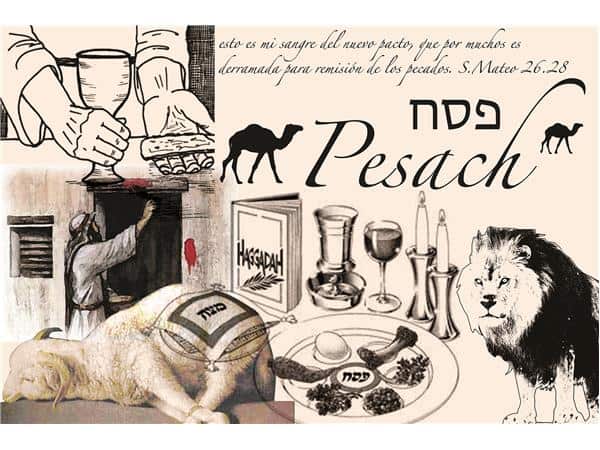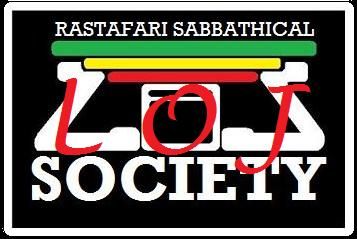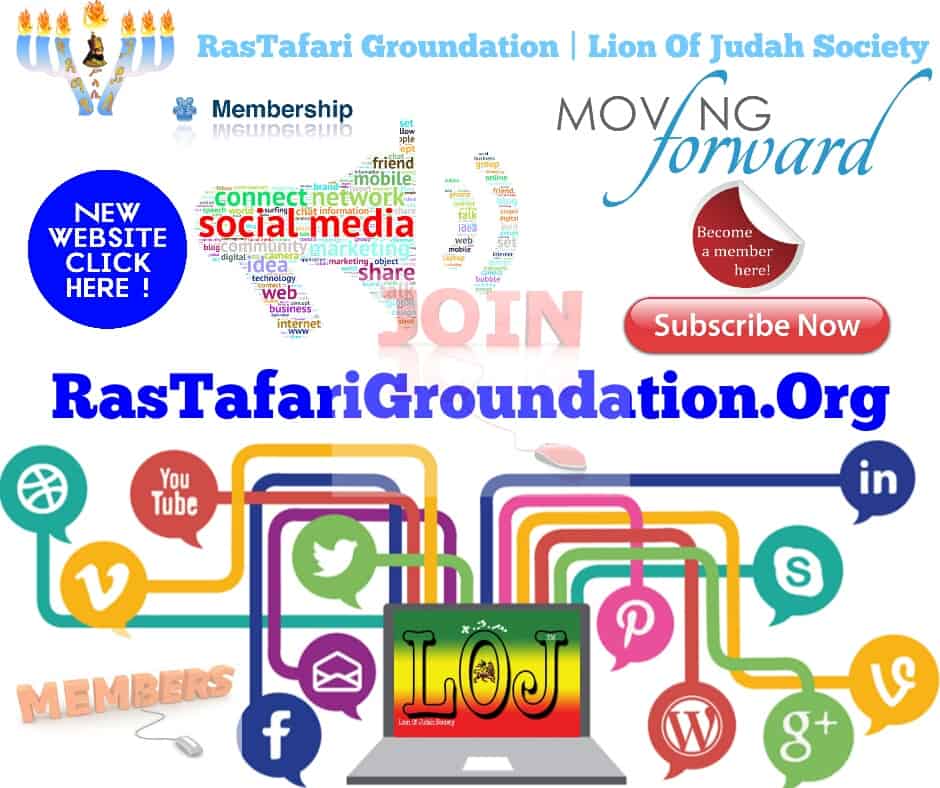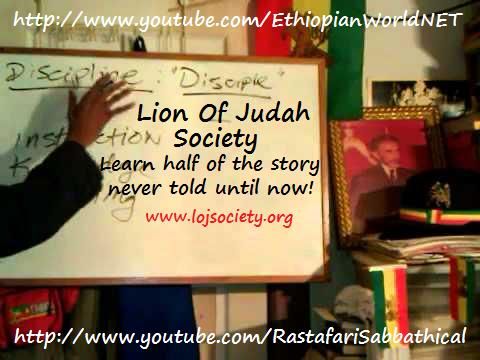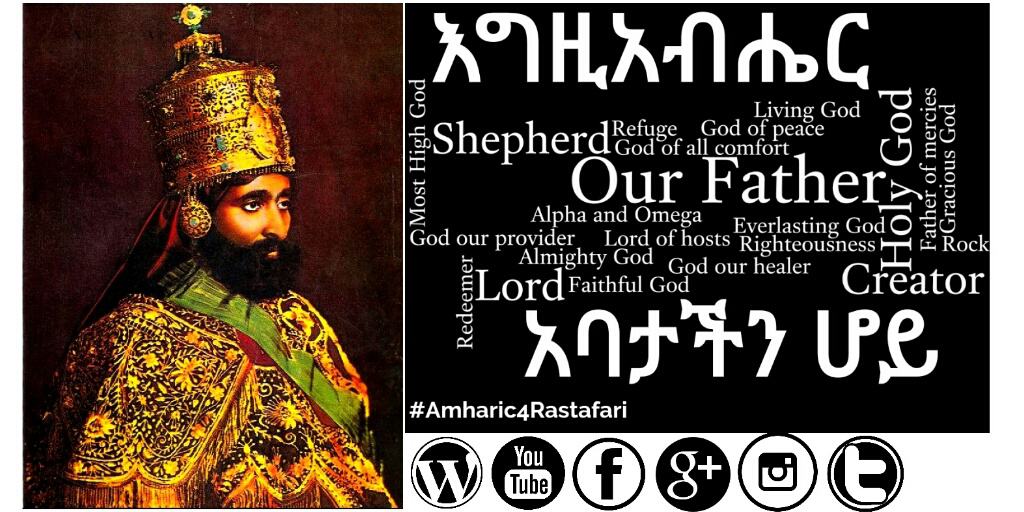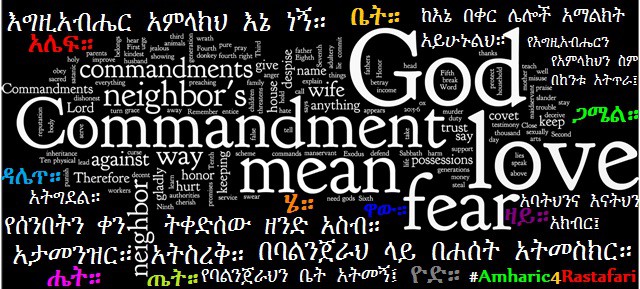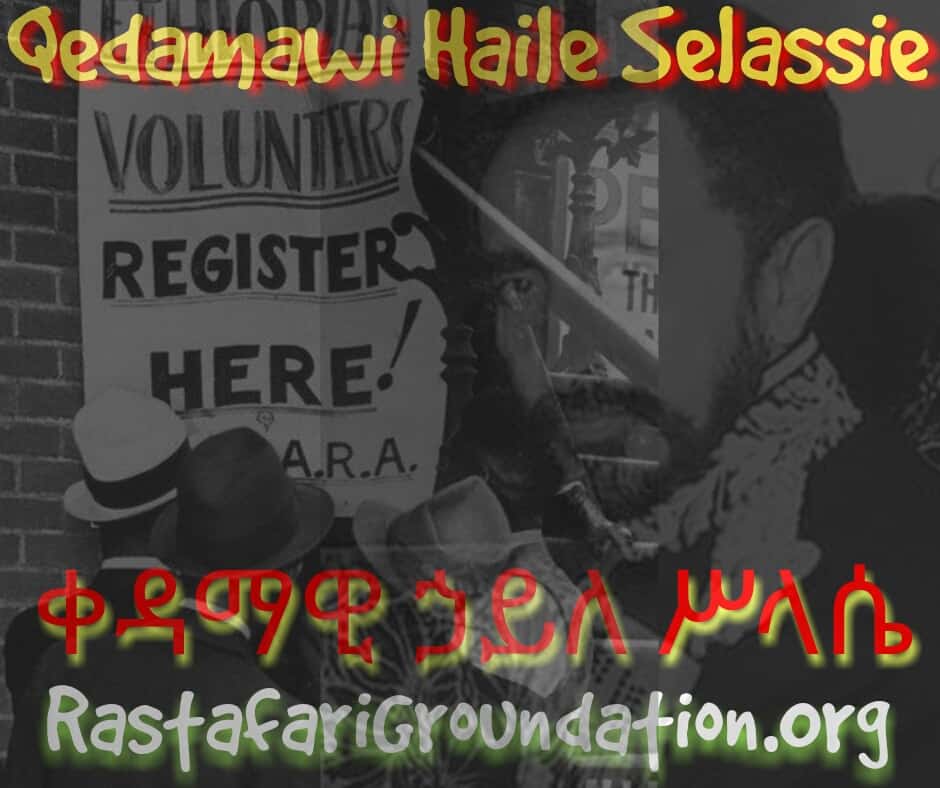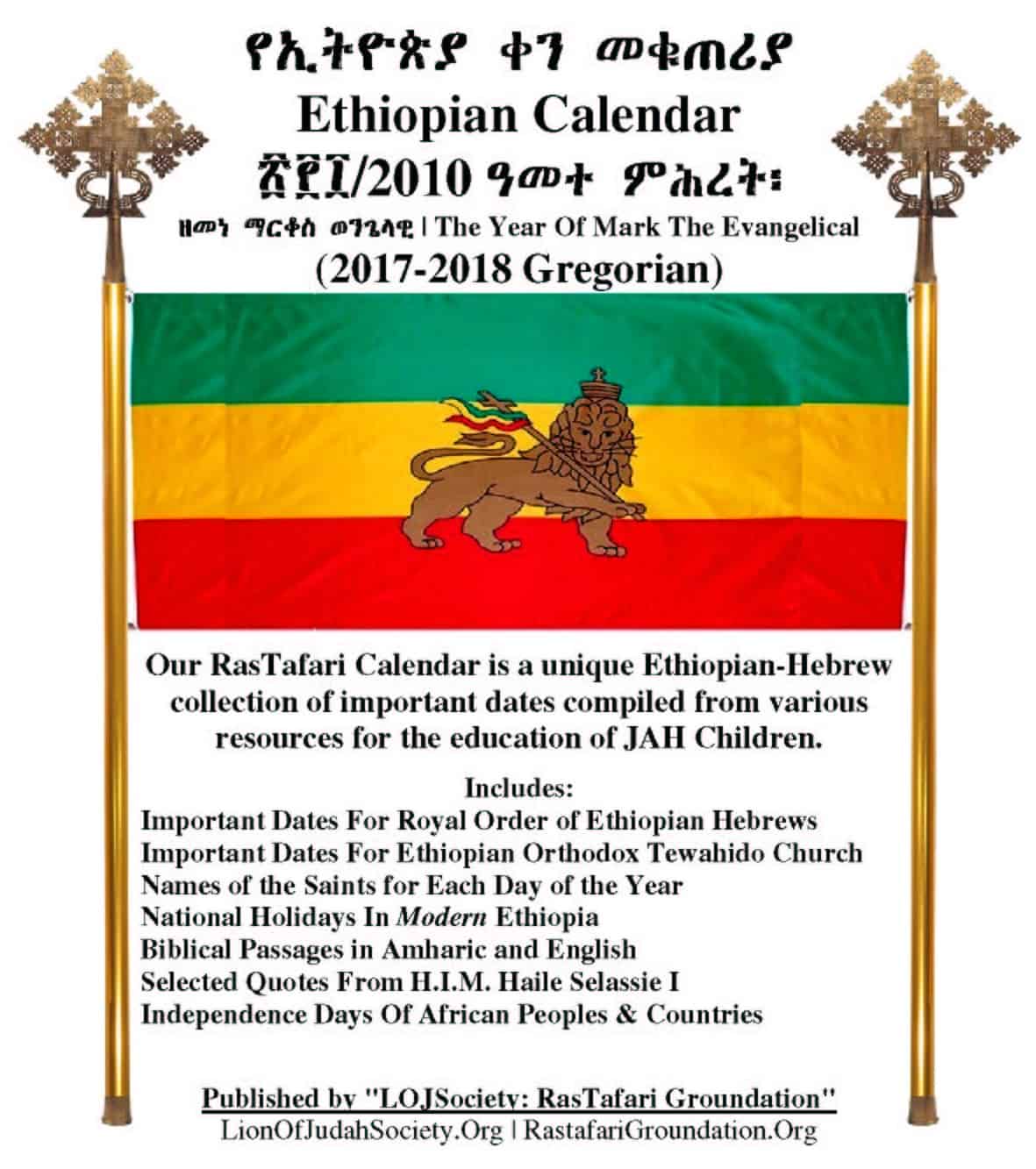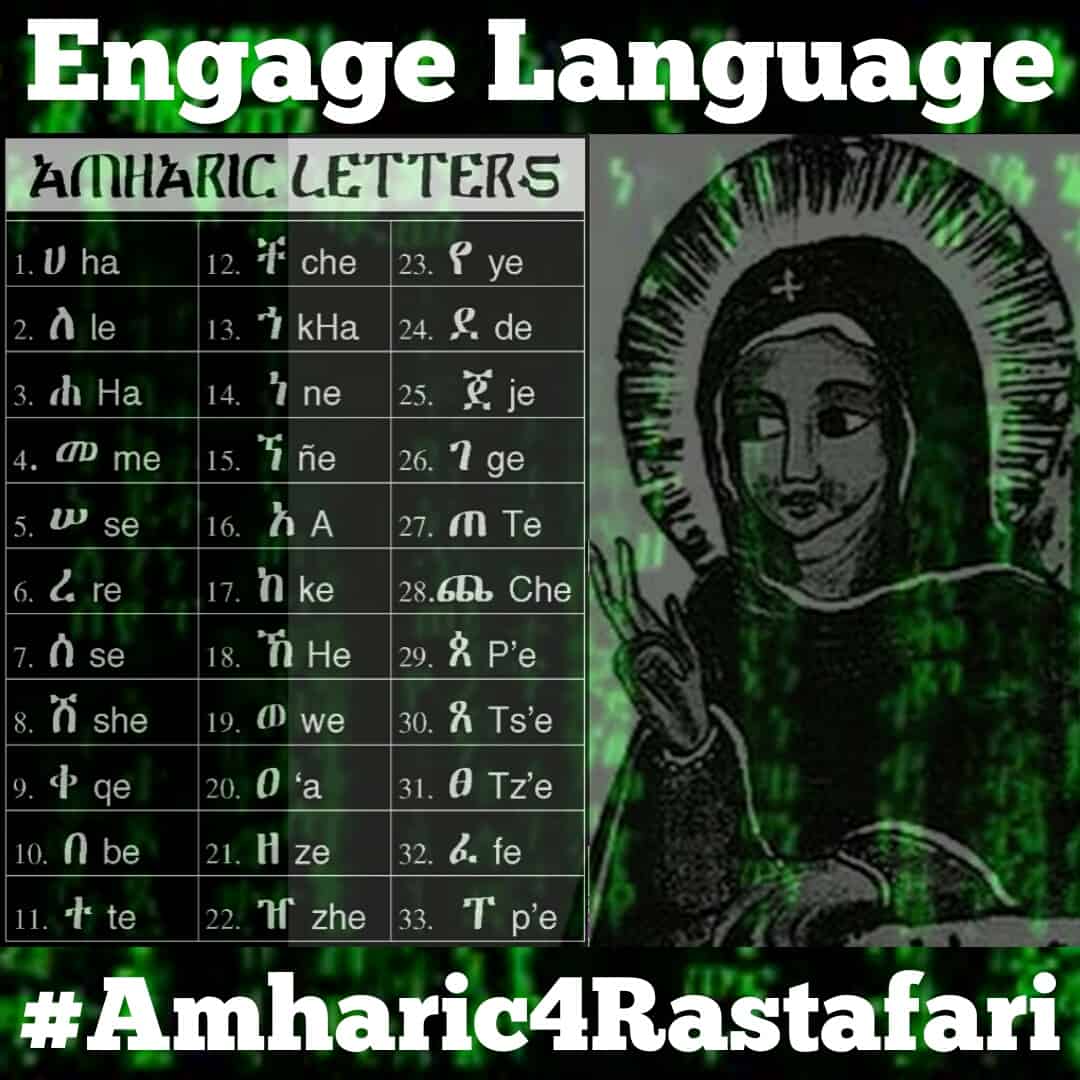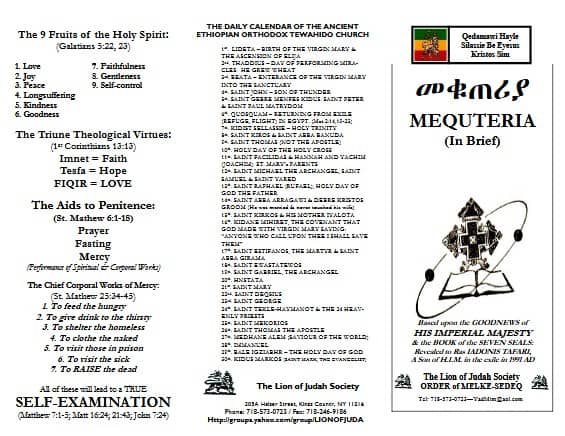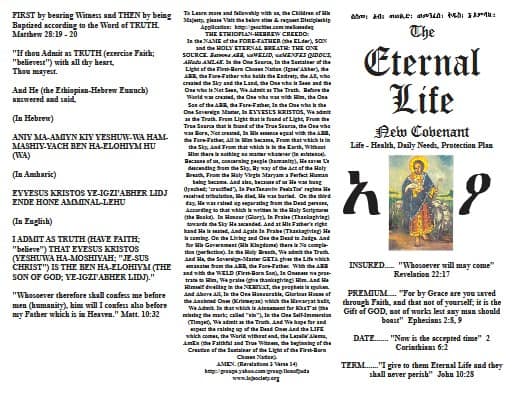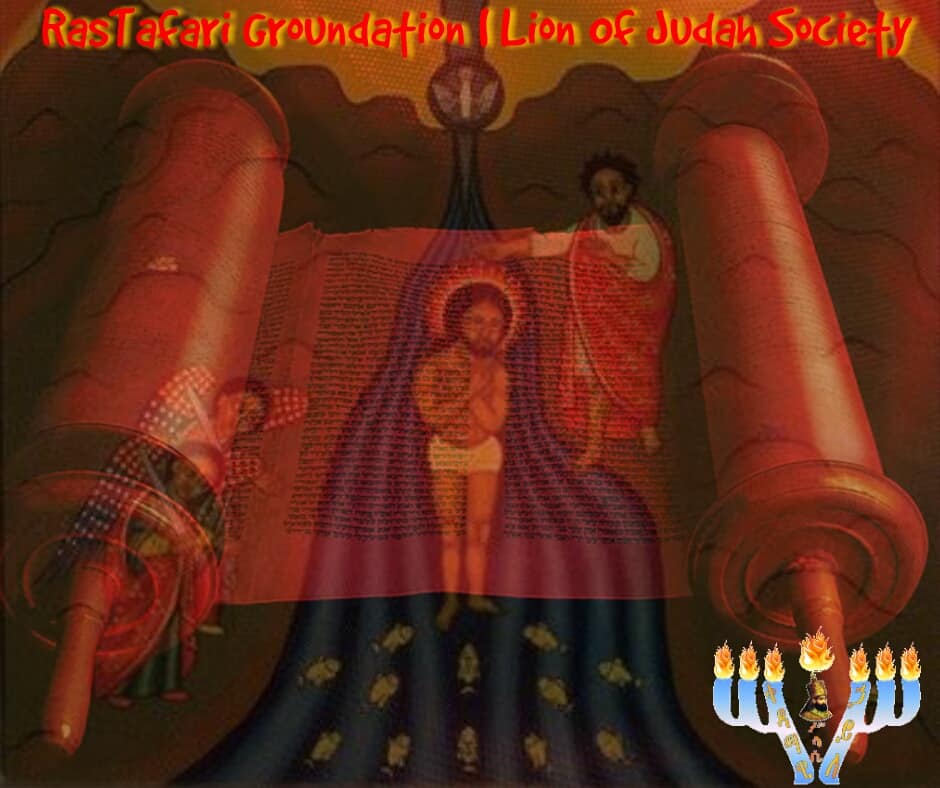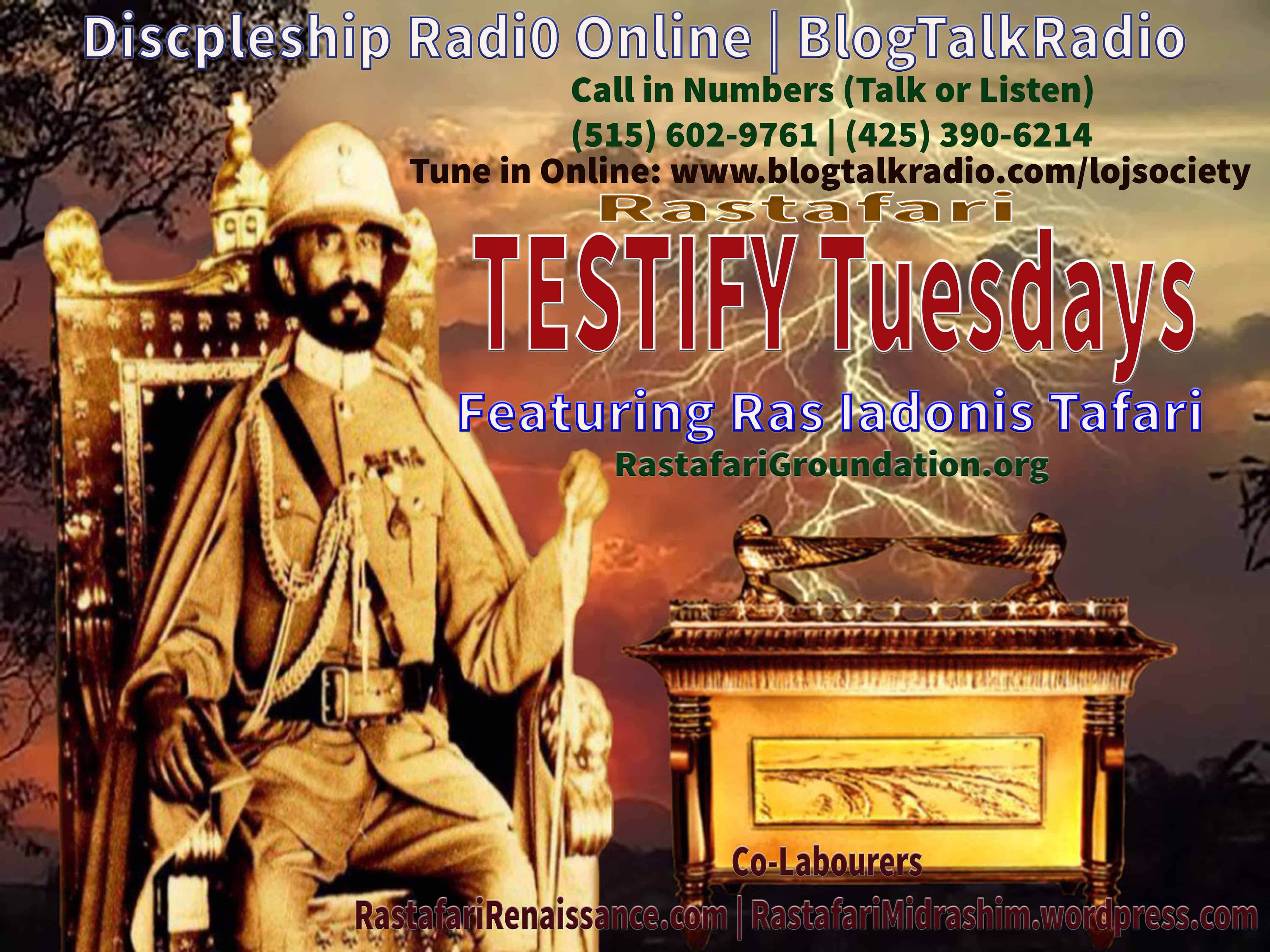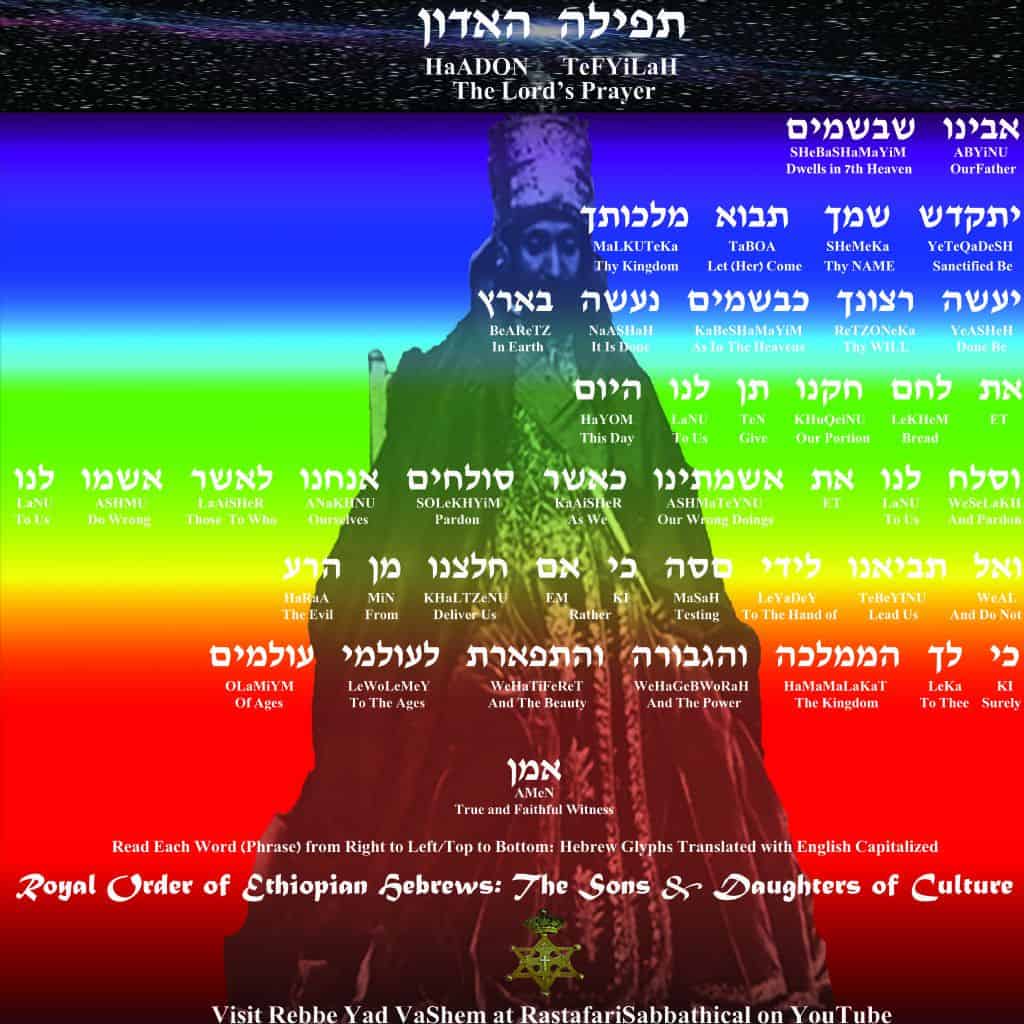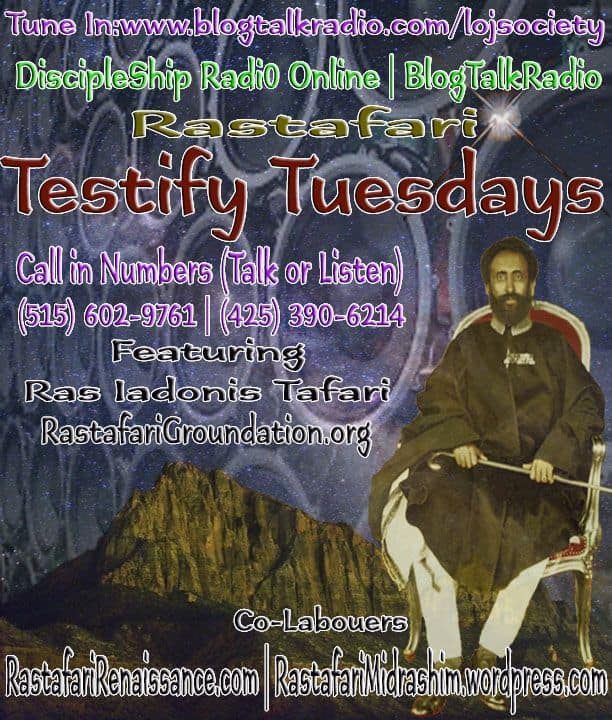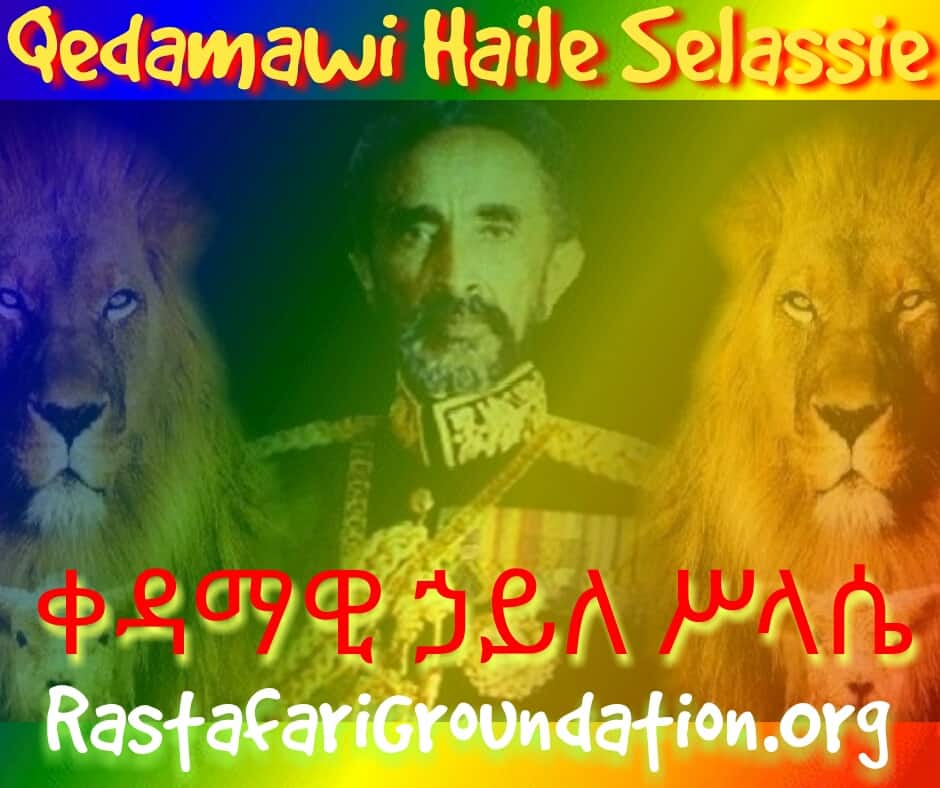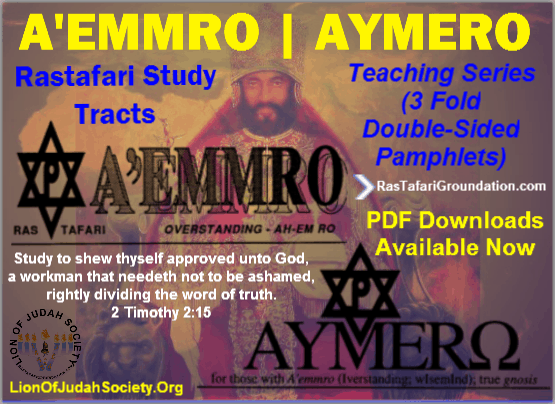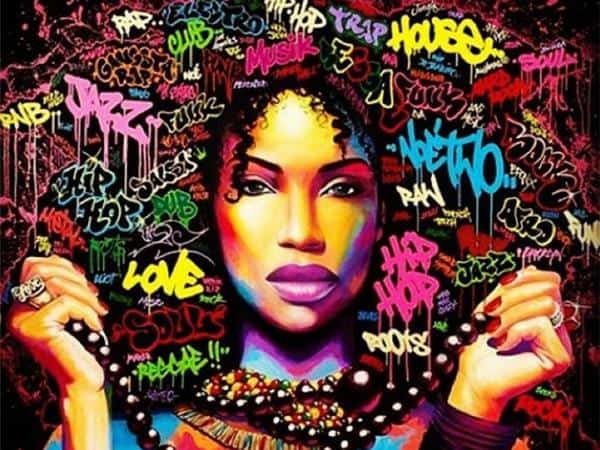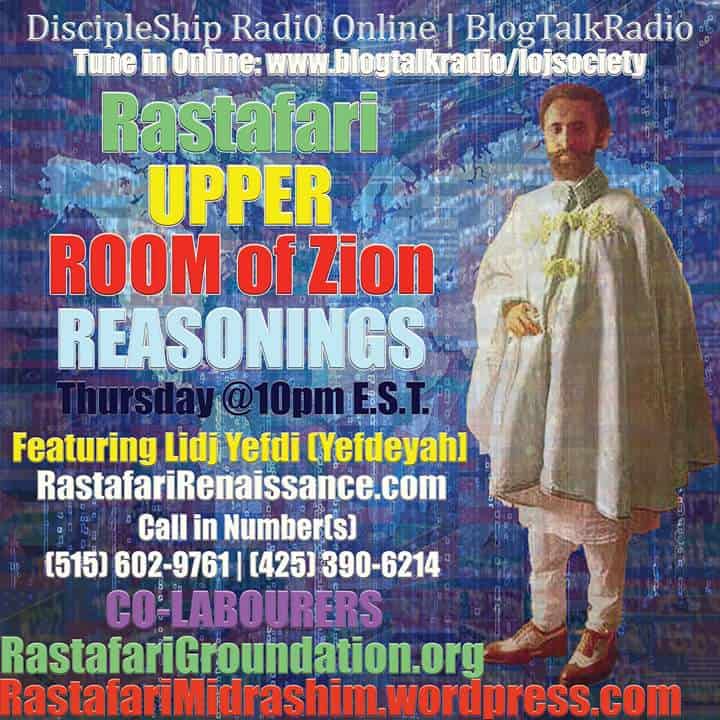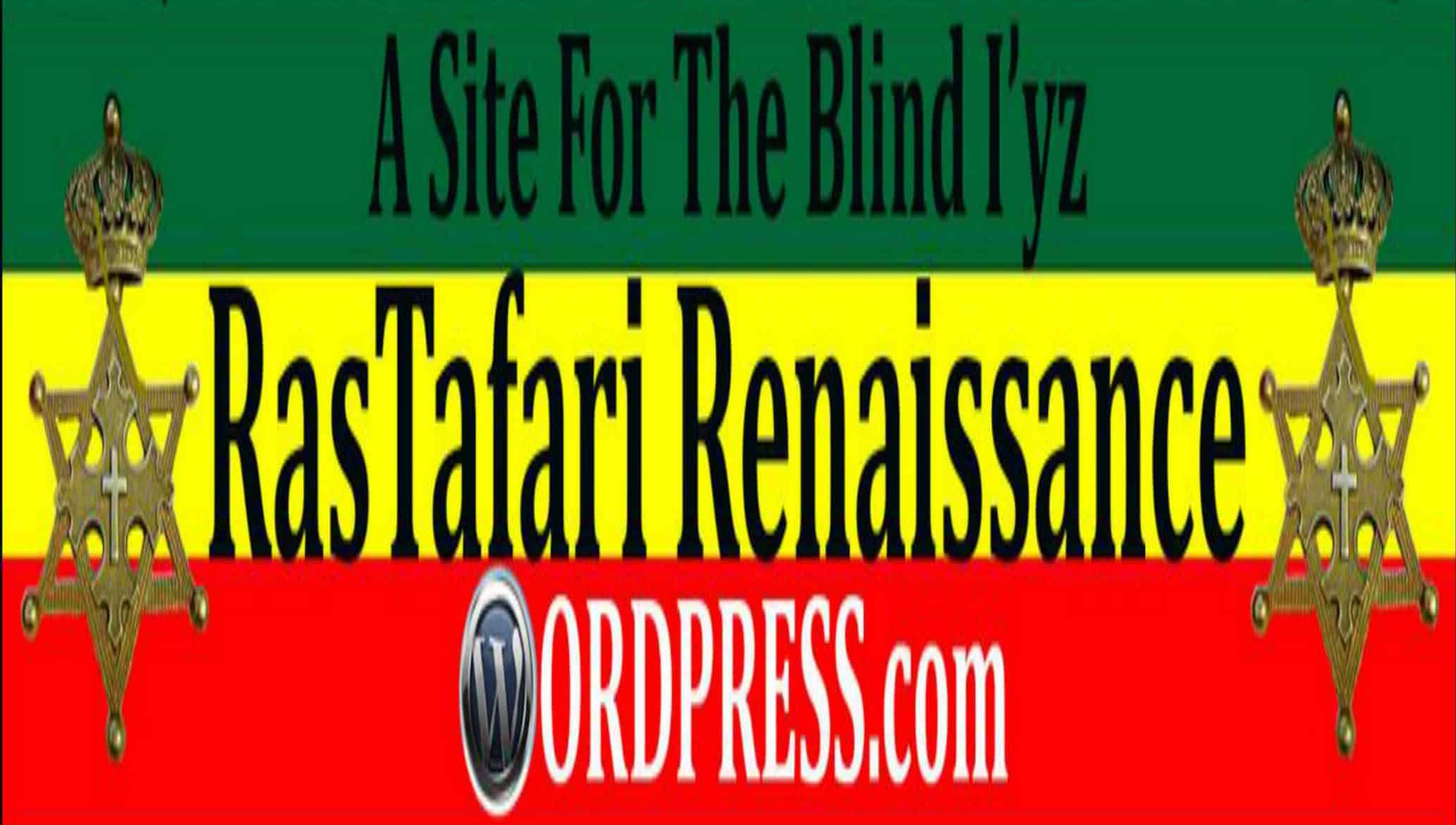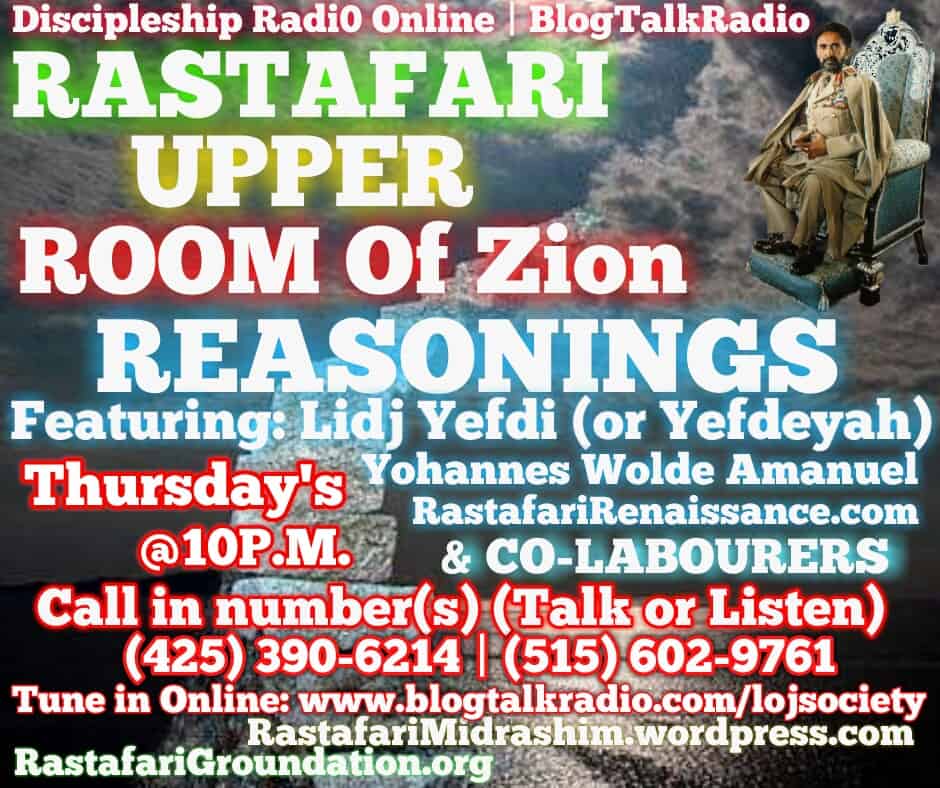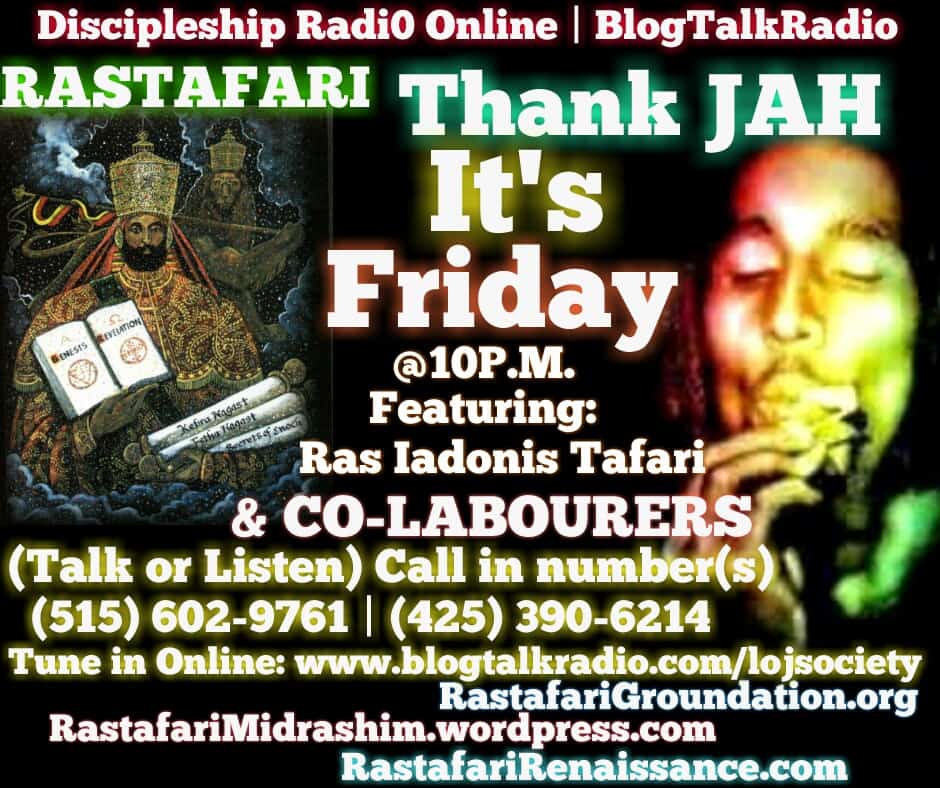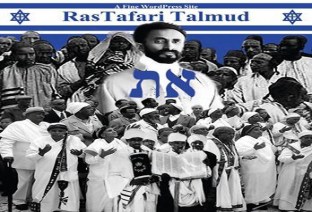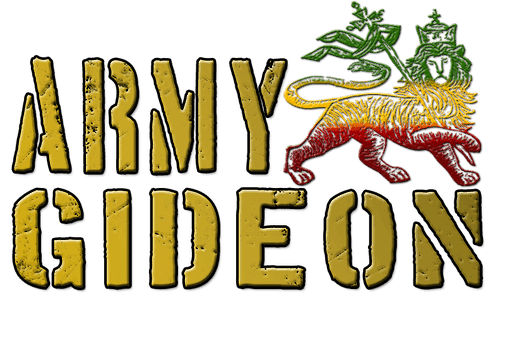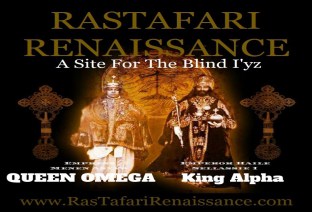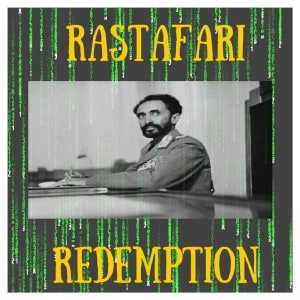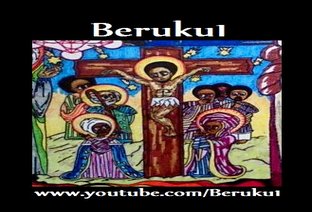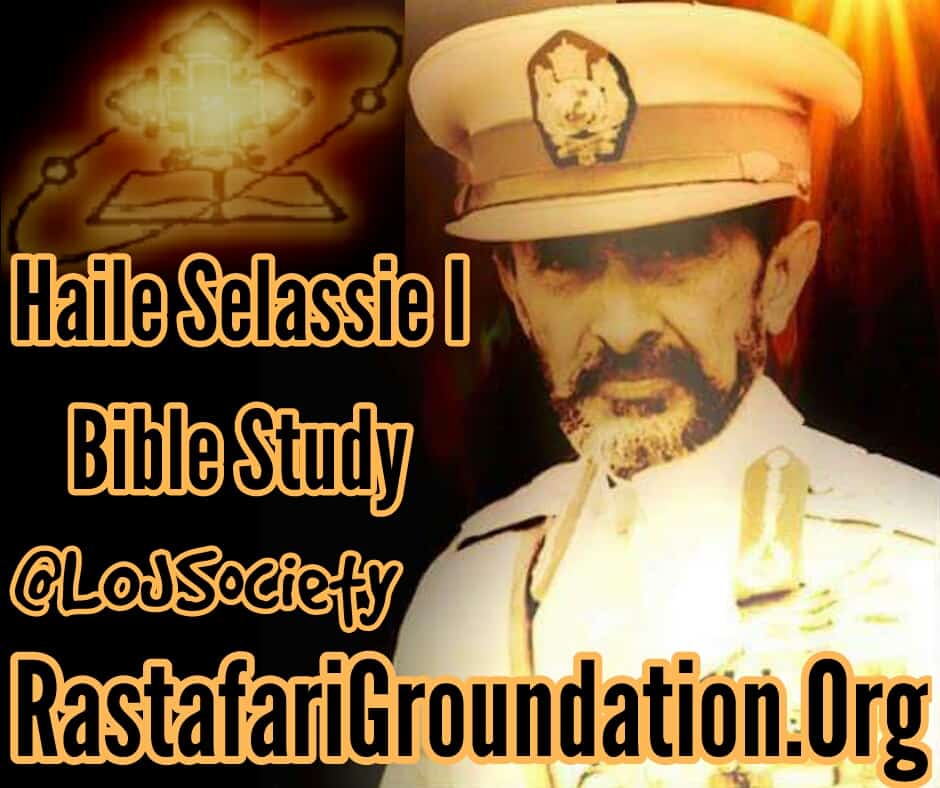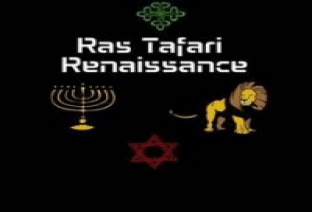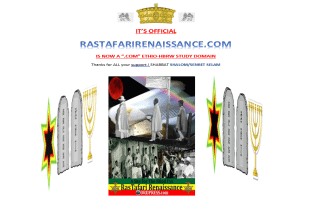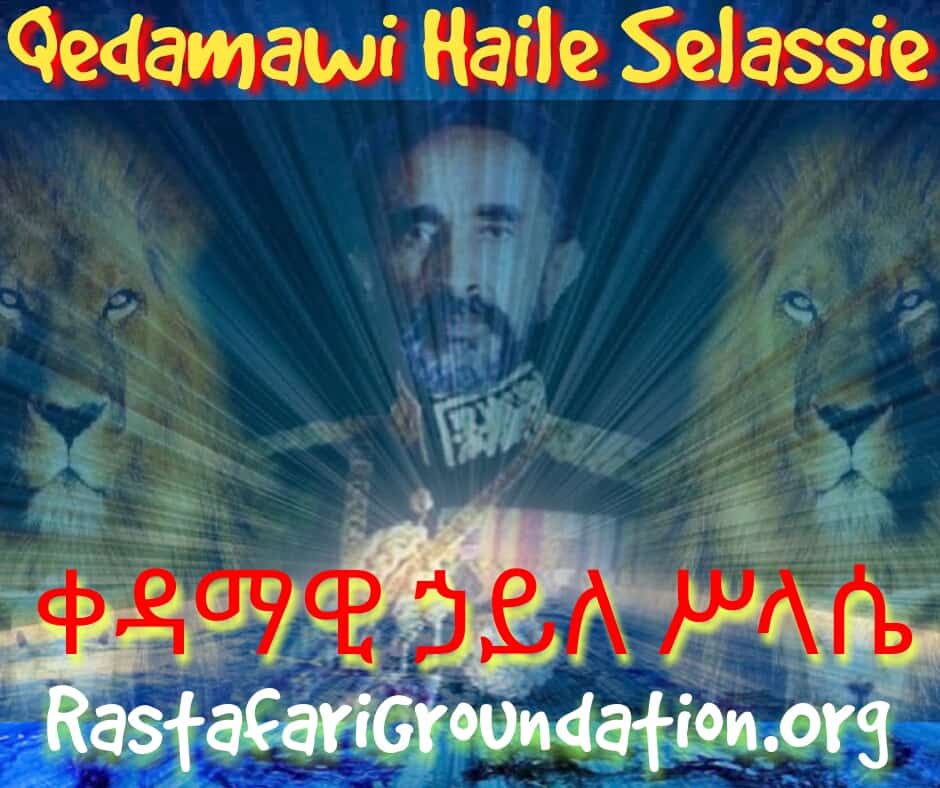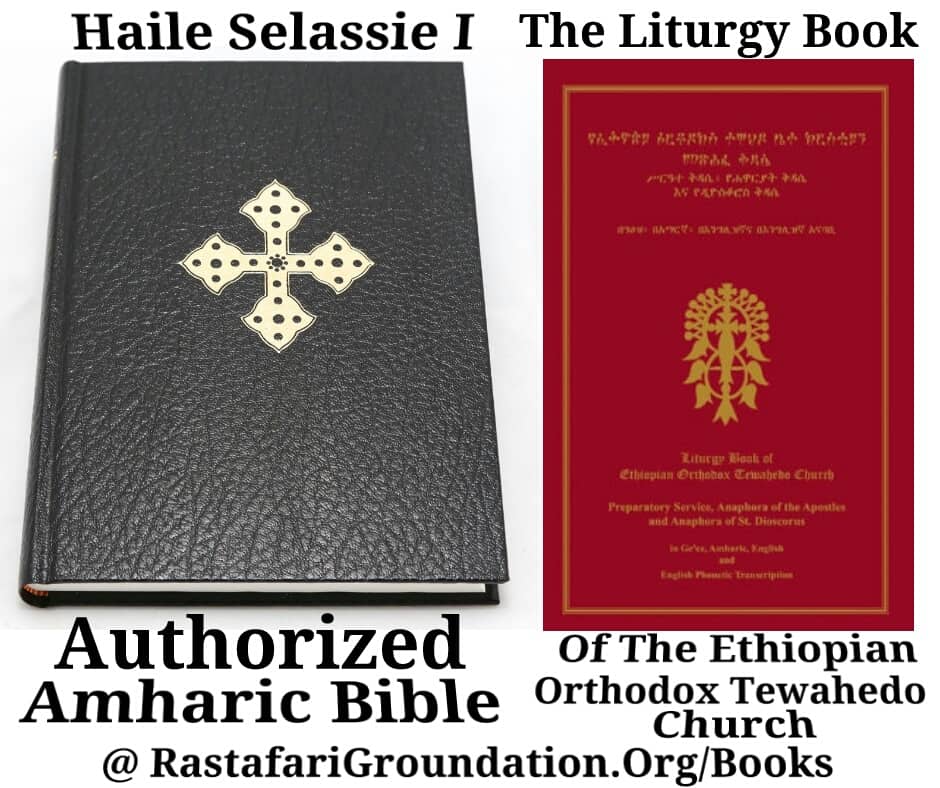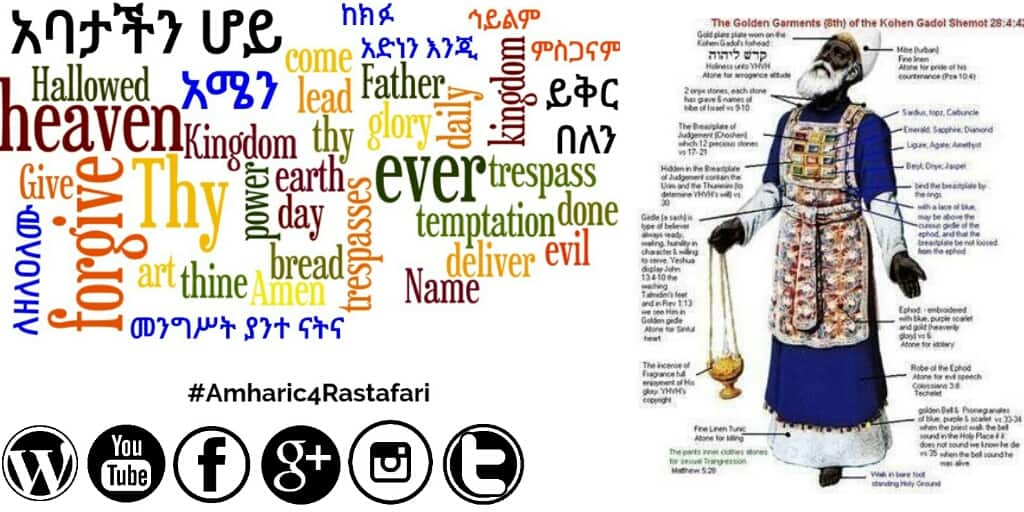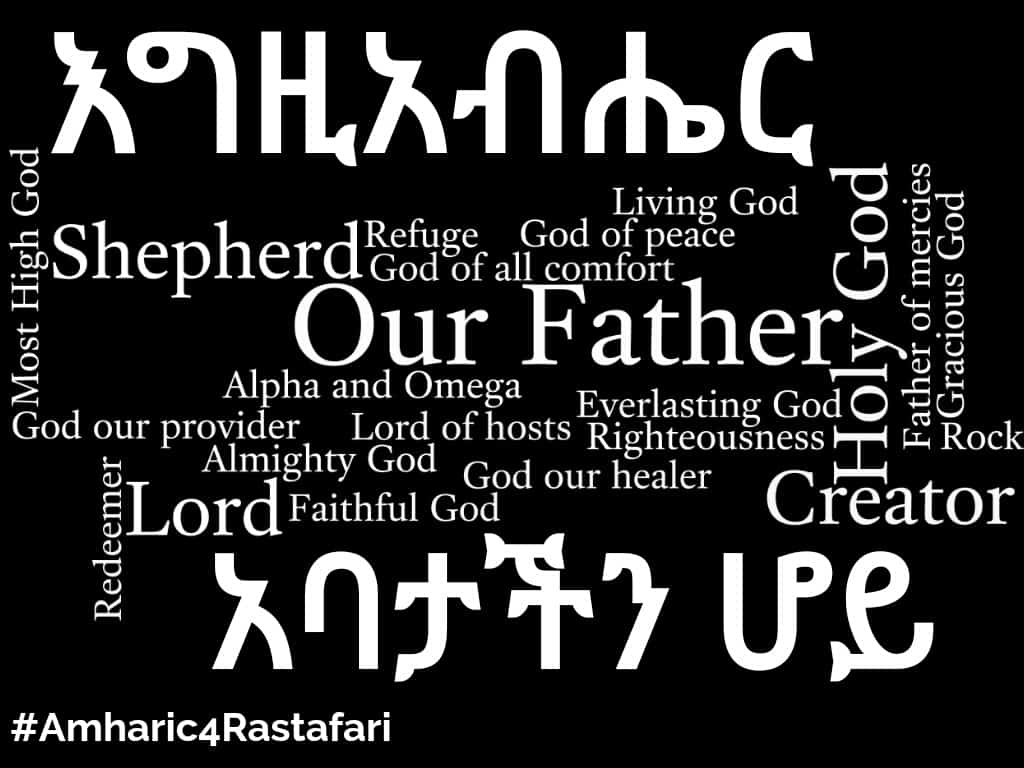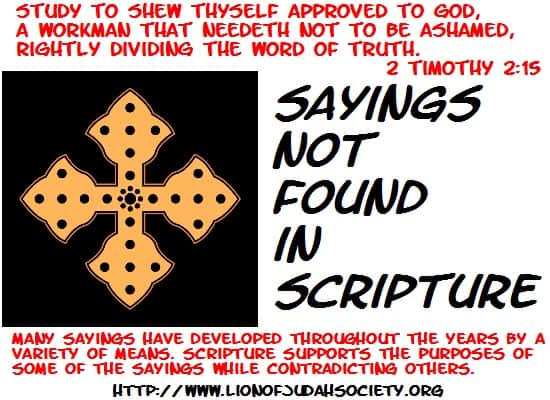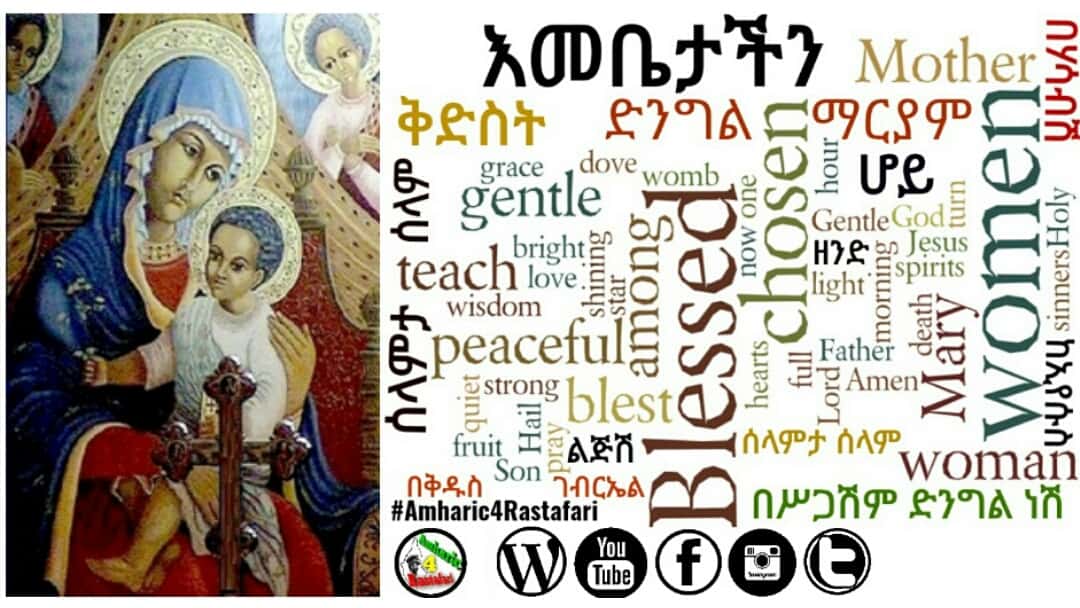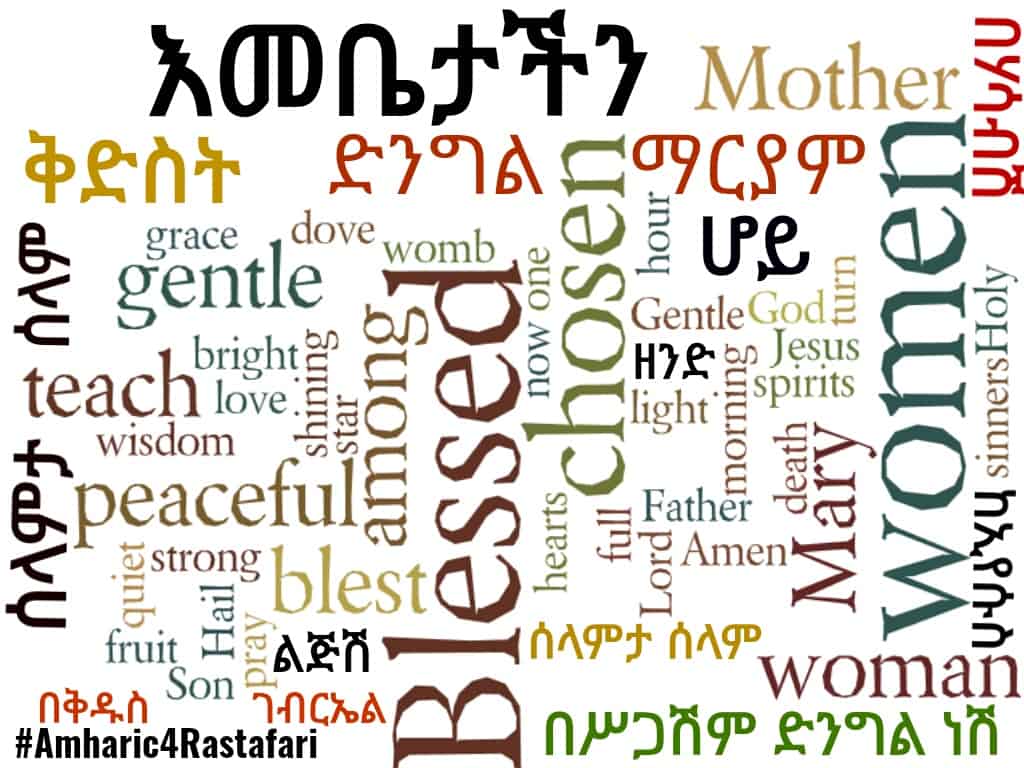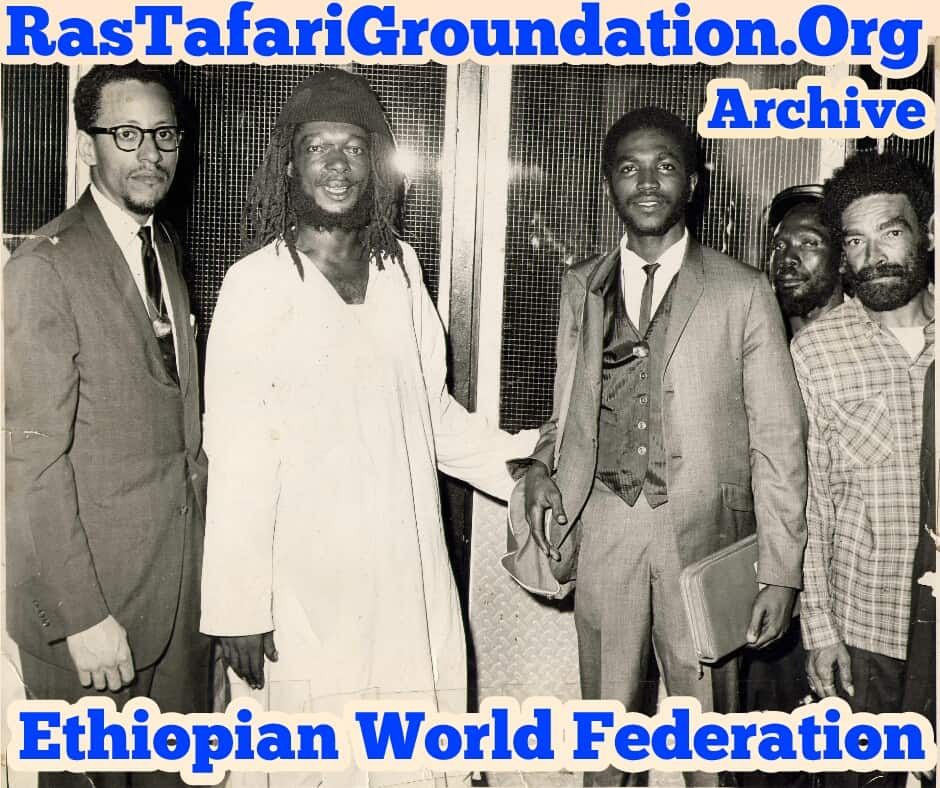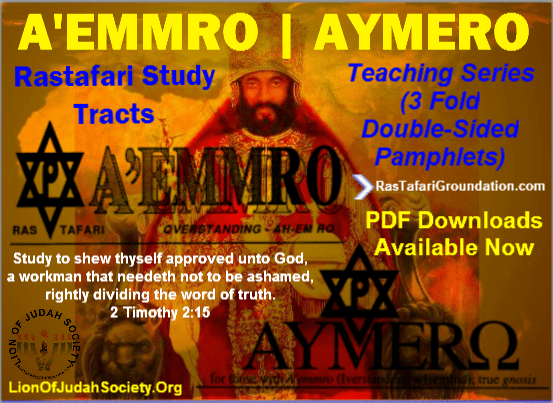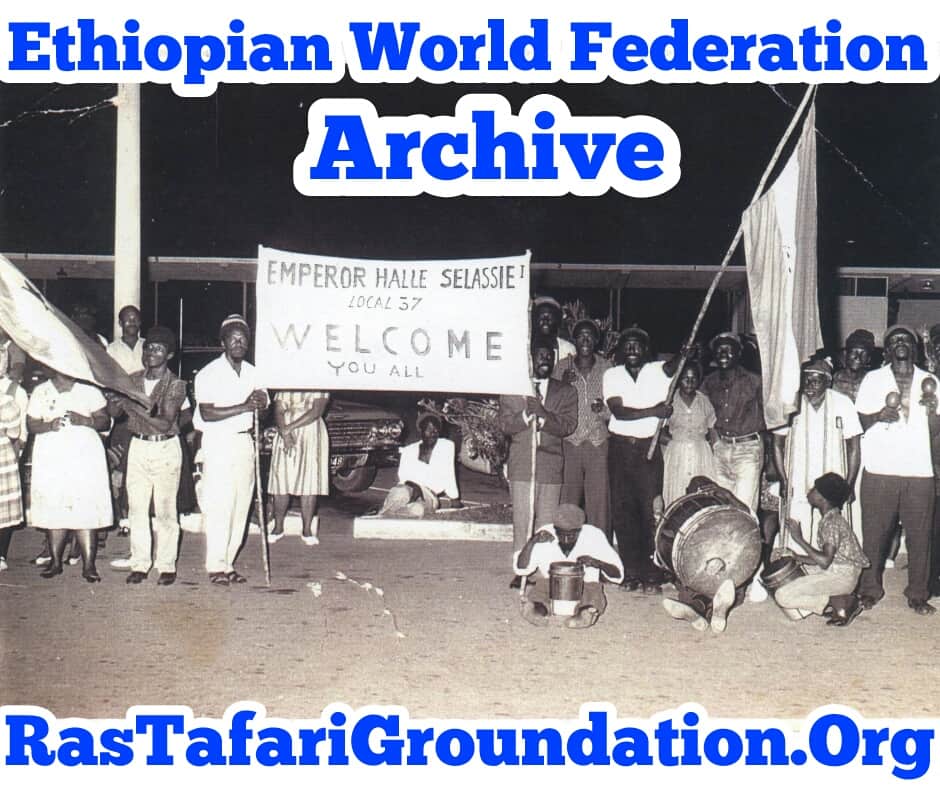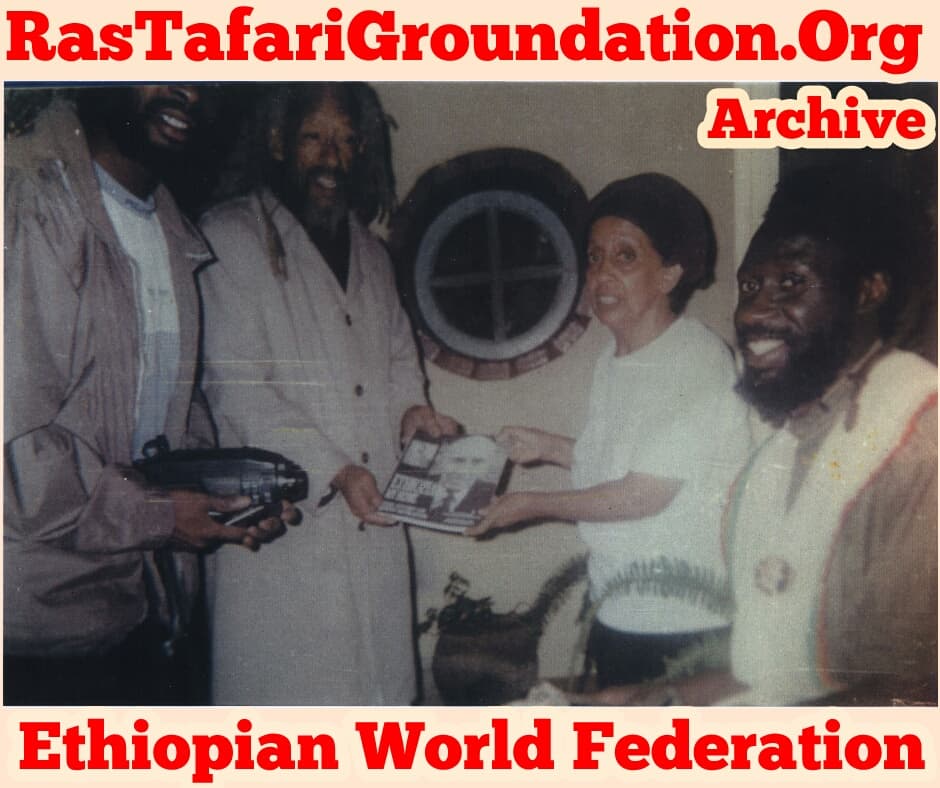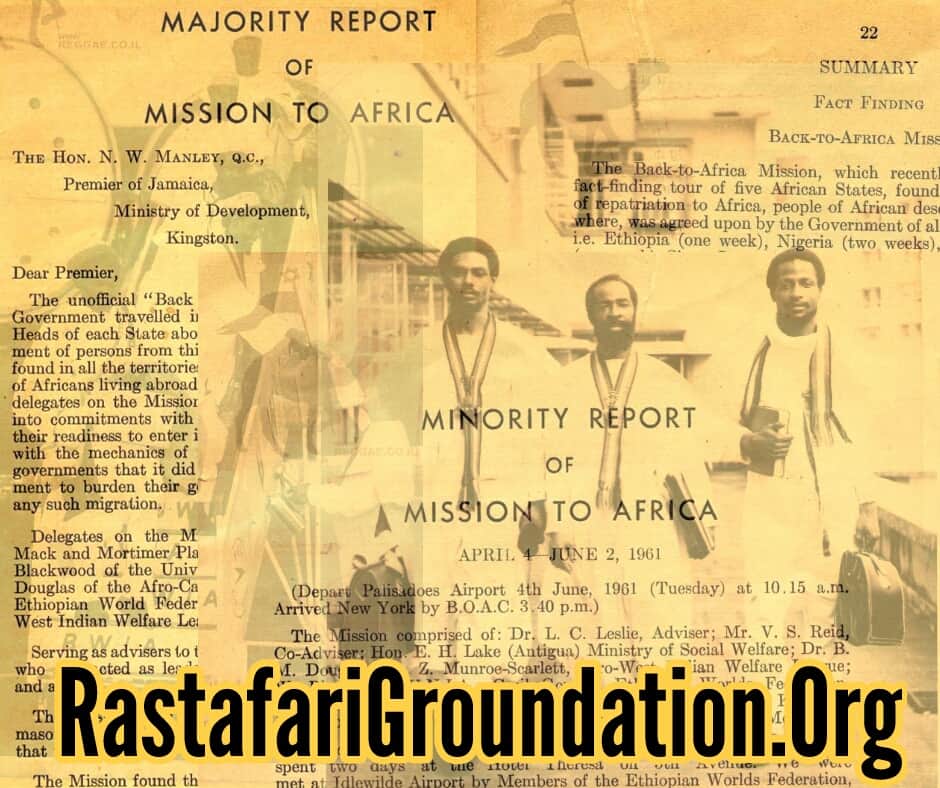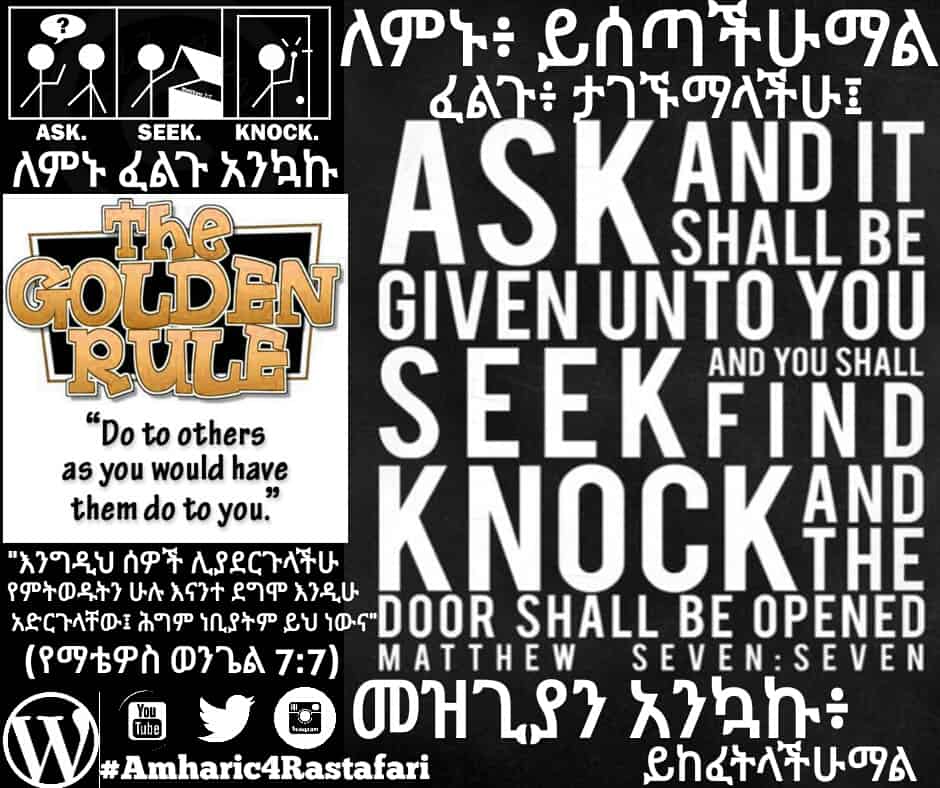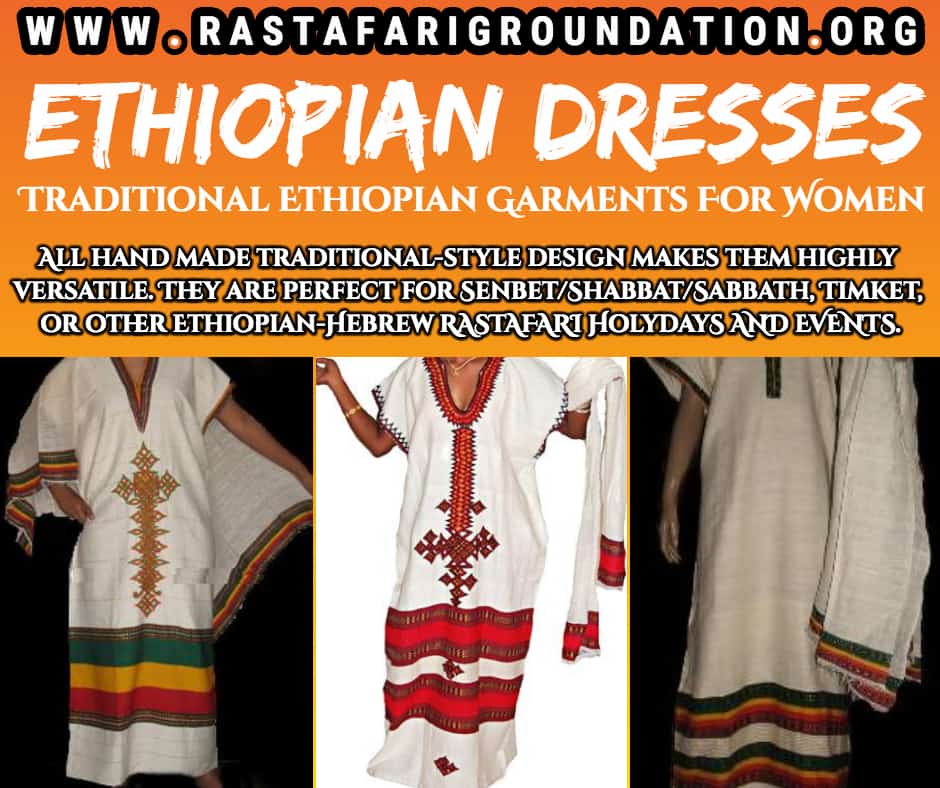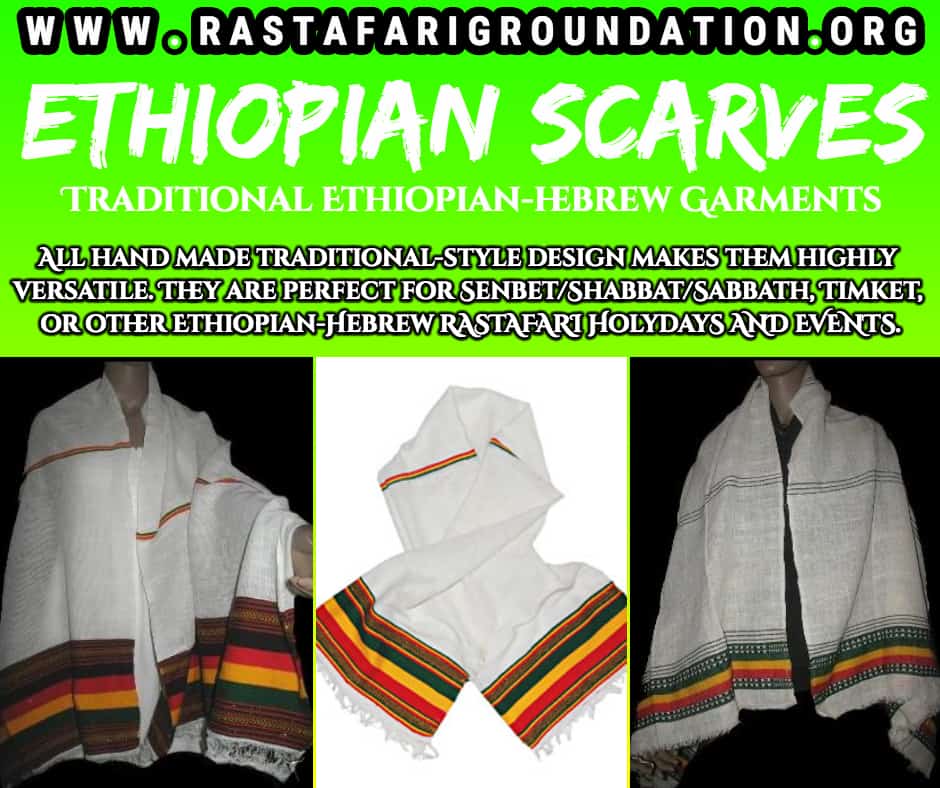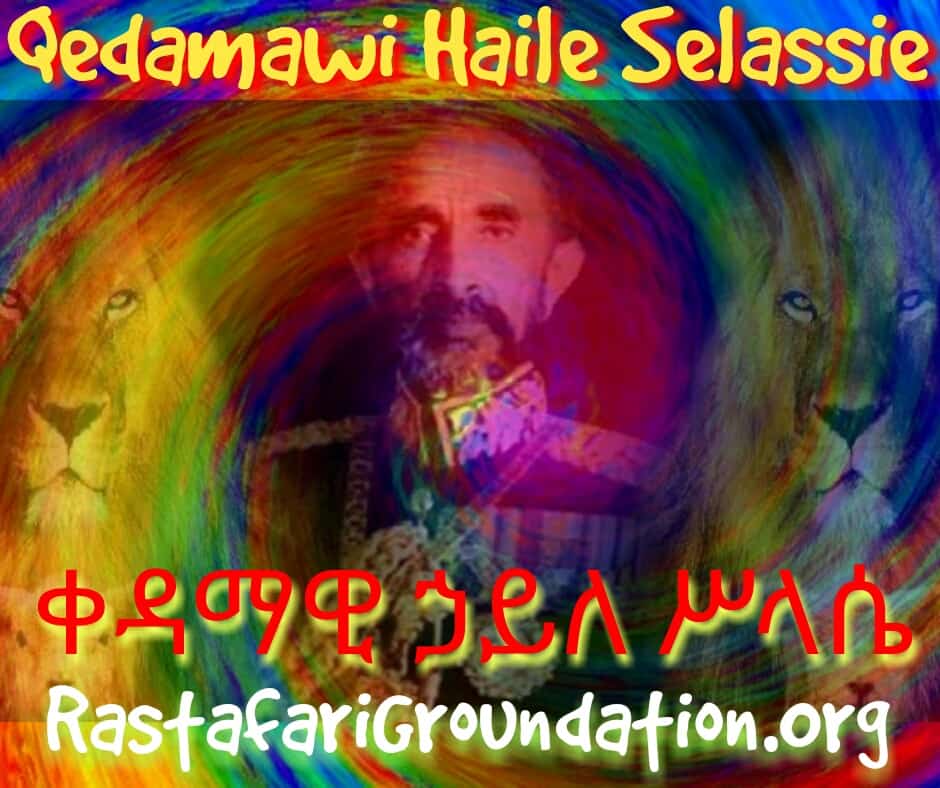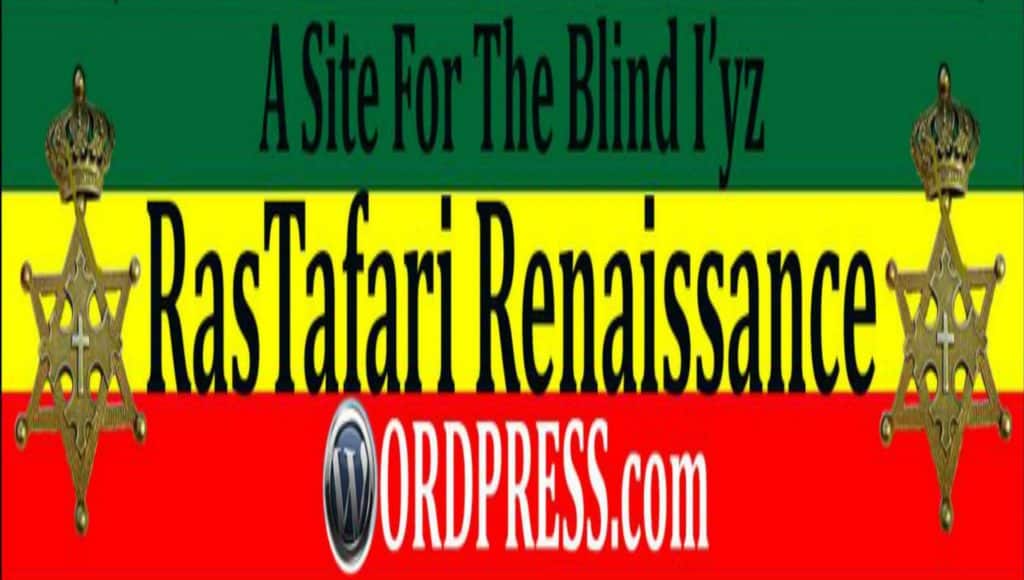Dr. Malaku E. Bayen: Ethiopian Emissary to Black America 1936-1941
By William R. Scott
Although it is not generally known, a considerable amount of the public interest, sympathy, and condemna- tion generated throughout the world by Italy’s blatant act of aggression against Ethiopia in October 1935 emanated from black communities in the United States. As the distinguished black historian, John Hope Frank- lin, has indicated, " When Italy invaded Ethiopia, they (Afro-Americans) protested with all the means at their command. Almost overnight even the most provincial among the American Negroes became international- minded. Ethiopia was (regarded as) a Negro nation, and its destruction would symbolise the final victory of the white man over the Negro."1

May 19, 1936, African Americans took to the streets of Harlem to protest Italy's occupation of Ethiopia
While widespread, Afro-American interest in the Italo-Ethiopian War was concentrated in Harlem, New York, longtime intellectual and cultural centre of Black America. It was mainly there that Afro-Americans, sometimes in conjunction with liberal and radical whites, organised dozens of groups designed to raise both moral and material assistance for the Haile Selassie government in the United States. Motivated largely by their racial identification with the Ethiopians and the long-standing symbolic importance of that country in the black American community, these pro-Ethiopian socie- ties had succeeded by the winter of 1935 in mobilising significant levels of moral, if not monetary, support for the Ethiopian cause.2
The sad truth of the matter was that while there were substantial numbers of sympathetic Afro-Americans quite willing to contribute financially to the Ethiopian war effort, there were exceedingly few at the time who possessed the means to do so. The Great Depression of the 1930’s made it inordinately difficult, indeed impos- sible in perhaps most instances for an aroused but im- poverished Afro-American people to assist materially the beleaguered Ethiopians. Nevertheless, there is evidence that, despite the increased economic constraints imposed upon them by heightened poverty, many Afro- Americans, enraged by Italy’s assault on the world’s last remaining bastion of black power, managed some- how to make small contributions to organisations pur- porting to be raising funds for the Ethiopian cause.
Admittedly, such donations were usually minute sums, but they should not be scoffed at or summarily dismissed as being of no significance. Taken as a whole, these amounts may well have attained an impressive total, which certainly would have been of some, if not decisive, benefit to the Ethiopians.3 Unfortunately, prior to 1937, when the newly created Ethiopian World Federation assumed official control of all fund-raising activities in the United States, only a limited percentage of even these modest contributions seems to have reached its proper destination.
From the very outbreak of hostilities, black embezzlers and racketeers sought to take advantage of Afro- American sympathy for the Ethiopian people. These criminals gave the public impression that they were col- lecting funds for Ethiopia’s defence, but in reality, of course, they were lining their own pockets. In addition, some responsible organisations and individuals may have engaged in faulty business practices or even have mis- managed funds.4
To remedy this situation and more effectively cor- ordinate the efforts of the myriad pro-Ethiopian or- ganisations in New York, a number of public-spirited black citizens in Harlem formed the Menilek Club some time during 1936.5 This very small but active group desired to integrate all of the existing Ethiopian aid societies into one organisation officially recognised by the Ethiopian authorities. To the surprise of many sceptics, the efforts of the club actually culminated in the sending of a black American delegation to England in the summer of 1936 to confer directly with the exiled Haile Selassie about financial matters.
The mission consisted of three prominent Harlem figures, all leaders of the black organisation known as the United Aid for Ethiopia: Reverend William Lloyd Imes, pastor of the prestigious St. James Presbyterian, Philip M. Savory, chairman of the Victory Insurance Company and co-owner of the New York Amsterdam News, and Mr. Cyril M. Philp, secretary of the United Aid.6 In August 1936, the trio sailed without fanfare for England.7
Despite later rumours that he had rebuffed a black delegation in London, the Ethiopian emperor cordially received the Afro-American party at his residence in Bath. During the audience, the black Americans informed the monarch that large sums of money had been and were still being raised in the United States by unauthorised persons in the name of Ethiopia. They stressed the necessity of sending a special emissary to America to direct the collection of all contributions and to help awaken flagging Afro-American support for the Ethiopian cause. Impressed, Haile Selassie decided to dis- patch an envoy to the United States. He selected his personal physician, Dr. Malaku Emanuel Bayen, for the new position.8 Later events were to prove that the emperor could not have made a better choice.
The son of the Gerazmatch (Baron) Bayen and Waizero (Lady) Desta, Malaku Bayen was born on April 29, 1900, in Wollo Province in central Ethiopia.9 At six months of age, he was taken by his parents to the city of Harar, where he grew up in the palace of Ras (Grand Duke) Tafari Makonnen, his mother’s first cousin and the future emperor of Ethiopia.10 In accordance with the aristo- cracy’s custom of educating and training likely young boys for positions of leadership, young Bayen was placed under the tutelage of his prominent and powerful rela- tive and taught by priests, attached to Ras Tafari’s palace.11
During these years, Bayen lived close to the future king, serving as both his page and personal attendant. In 1921, when Tafari was selecting young Ethiopian men and women to be educated abroad, Bayen was among the first to be chosen. " I was told of my responsibility by His Majesty himself; that I was to study medicine and return to Ethiopia as a physician for the purpose of helping to organise the Public Health System. . . ,"12
Bayen was subsequently sent to Bombay, India with three colleagues, two young men and a woman, for pre- paratory studies under private tutors from Great Britain. Cast in the typical imperialistic mould of Victorian Eng- land, these instructors used " to tell us," Bayen later re- called, " of the greatness of the British Empire."13 Finally, when his teachers haughtily informed him6 and his com- rades that it was British destiny one day to control Ethiopia, Bayen decided that he had had enough of an English education. After discussing the matter, he and his friends concluded that, " America was the only country that would never try to rob us of our country; therefore it would be best to go there."14
The tiny group thereupon prevailed upon their bene- factor, Ras Tarari, to permit them to pursue their studies in the United States, where imperialistic designs on Africa seemed absent. Much to their probable relief and delight, the students’ request was granted.15 Thus, within the short span of one year they were preparing to travel to yet another far-off land of whose existence most of their countrymen were only dimly aware.
Shortly thereafter, in the company of an American mis- sionary to Ethiopia, Bayen set sail with two of his col- leagues for the United States. (The young woman had died in India.) The three students arrived in America in April 1922, carrying with them a personal letter of intro- duction to President Warren G. Harding from Ras Tafari, by now heir apparent to the Ethiopian throne. Because of their impressive credentials from the Ethio- pian regent, the trio was permitted to meet Mr. Harding, who urged the Africans to enroll at his alma mater, Marietta College. The Ethiopians accepted the President’s kindly suggestion and proceeded to apply for admis- sion to Muskingum College in New Concord, Ohio, since it had recently absorbed the smaller Marietta.16
A series of placement tests given to the Ethiopians qualified them, however, for only the first year of high school, compelling them to begin their academic careers in the United States as secondary school freshmen. Apparently undaunted by this unexpected turn of events, Bayen zealously studied his lessons at Muskingum Academy and by attending classes during the regular school year and summers he was able to complete his high school education in 1925. That fall Bayen entered Muskingum College; he graduated from that institution just three years later, becoming one of the first Ethiopian nationals to earn an American degree.17
The autumn of 1928 found Bayen at Ohio State Uni- versity in Columbus, Ohio, where he had enrolled as a graduate student in chemistry. He remained there, however, for only one academic year. Some time during that year, the Ethiopian applied and was admitted to the Medical School at Howard University, one of the nation’s most prestigious black educational institutions.18

In 1931, Dorothy Hadley of Evanston, Illinois, married Prince Malaku Bayen of Ethiopia, Nephew of Haile Selassie I
Bayen’s stated reasons for matriculating at a black university suggest a strong commitment to the concept of pan-Africanism. " My Belief in Race Solidarity," Bayen wrote in 1939, " caused me to select Howard Uni- versity for my studies, in order that I might have a closer contact with my people. In fact," he continued, " it was this idea that helped me to break my engagement to the daughter of our Minister of Foreign Affairs and to to be married to an American girl (Dorothy Hadley) of the Black Race, in 1931."19
The source of Bayen’s identification with Afro- Americans is not entirely clear, but his convictions may have been partially shaped by his close relationship with Dr. Azaj Workneh Martin, a leading Ethiopian physician and staunch advocate of pan-Africanism. As early as 1927, Dr. Martin had advised Bayen that, " The greatest service you could render your country would be to in- fluence thousands of Black people in the U.S.A. and the West Indies and let them come and help us develop Ethiopia."20 It is, of course, possible that Bayen was also inspired by the nationalistic Garvey movement which was reaching its peak when he arrived in the United States during the early 1920’s. Finally, like other Africans studying in the United States during these years, Bayen was probably becoming well acquainted with Afro-American institutions, leaders and thought.21
Whatever its orgins, Bayen’s pan-Africanism was more than just an attitude of mind. He fully realised the practical benefits that could result from international black brotherhood. Thus, between 1930 and 1935, Bayen followed Dr. Martin’s advice and arranged for several highly skilled Afro-Americans to be invited to Ethiopia by the imperial government as advisers.
In 1930, Bayen took Hubert F. Julian, the Harlem aviator, to Ethiopia. A year later he arranged to have Dr. John West, a physician from Washington, D.C., sent to his country to serve there as a public health official. In 1932, Bayen was instrumental in obtaining a position in the Ethiopian school system for Cyril Price, and in 1934 he played a prominent role in assisting John C. Robinson of Chicago to be appointed as an instructor in aviation.22
Although some of the Afro-Americans who found their way to Ethiopia during this period proved to be considerably less effective and suitable than others, neither Bayen nor the Emperor Haile Selassie seem to have become disenchanted with Afro-Americans as a people. Bayen, especially, continued, despite some dis- appointments, to court black Americans with enthusiasm. For instance, some time in the spring of 1935, he ap- pealed to officials at Tuskegee Institute in Alabama to send several of its outstanding graduates to Ethiopia to assist in the agricultural development of the empire.23 Tuskegee, which had a long history of such involvement in African development,24 had apparently agreed to unundertake the Ethiopian project, but the outbreak of war with Italy that fall prevented fulfilment of the plan.25
After the Italian invasion of Ethiopia, Bayen focused less upon recruiting skilled Afro-Americans for service in Ethiopia and more on mobilising black American sup- port for his country. Concentrating on black institutions, Bayen undertook to speak to a wide variety of Afro- American social and religious organisations; the black church, longtime centre and bulwark of the Afro-Ameri- can community, seems, however, to have been his princi- pal forum.
Before these usually receptive groups, the Ethiopian spokesman was careful to stress the importance of inter- national black unity and the responsibility of black people to each other. For instance, shortly before the eruption of formal hostilities between Ethiopia and Italy, Bayen told an audience of three hundred at Bright Hope Baptist Church in Philadelphia that, " Abyssinia is the pride of the black people of the world and the only thing that has delayed Italy’s formal declaration of war thus far has been public opinion. If we are convicted it is be- cause we are black. The American Negro is (therefore) duty-bound to support Abyssinia."26
Since he was one of the few Ethiopians in the United States at the time and because of widespread reports that he was a close relative of the Ethiopian Emperor, Bayen received much publicity in the Afro-American press and many inquiries from blacks how they could best assist Ethiopia during this critical period. Those who wished to serve as volunteers in the Imperial’ Ethiopian Army naturally sought his advice and co-operation, since there were reports in the black press that would-be volunteers could " enroll with Malaku Bayen at (his residence) 1260 Columbia Road, northwest, Washington."27
Immediately following the publication of such infor- mation, the Ethiopian made it explicitly clear, however, that he was not involved in recruiting activities: " I wish it to be understood that my only mission in the United States is to get an education." But conscious of Afro- American sensitivities, Bayen added, " I think it is a fine spirit for the (black) Americans to be showing, inasmuch as Ethiopia is contending for a principle. I am sure that my country would be pleased to know of such willing- ness."28 Furthermore, Bayen also expressed the en- couraging view that he did not see why his government would refuse such help, provided Afro-American partici- pation in the war constituted no infraction of American neutrality laws.29
Despite the anxieties created by the crisis in Ethiopia and the activities in which he was increasingly engaged as a result of his own concern for his country’s welfare, Bayen passed his examinations at Howard University and was graduated from its medical school in June 1935.30 Originally, Dr. Bayen had intended to remain in the United States to complete his internship, but the serious situation in Ethiopia caused the Emperor to recall him. Thus, on July 10, 1935, the physician departed for Ethiopia with his wife, Dorothy, and young son, Malaku, Jnr.31
The Bayens arrived in Addis Ababa on August 1, and were soon settled in a large, modern two-storey house in which few of the comforts of a Washington home were lacking.32 Life, of course, in war-time Ethiopia was far from idyllic for the family, or for that matter, anyone else. Fortunately, however, no one in the Bayens’ immediate household was personally harmed as a result of the conflict,33 but Dr. Bayen’s duties at the American Mission Hospital in the capital and later with the Ethiopian Red Cross in the Ogaden, brought him into intimate contact with the war.34
Meanwhile, the war went badly for the Ethiopians. When it became crystal clear in late April 1936 that it was senseless to attempt to defend the capital in the face of certain defeat, the members of the Imperial Council persuaded the Emperor to leave the country for Geneva to make a final appeal to the League of Nations for sup- port. On May 1, 1936, Haile Selassie turned over the reins of government to Bitwodded (Most Trusted) Wolde Tzaddick, President of the Ethiopian Senate, with in- structions that the capital be transferred to Gore, near the Sudanese border. A day later with the royal family and about 100 high-ranking officers and close associates, the Emperor boarded a special train for Jibouti in French Somaliland.35 Among those who left Addis Ababa with the monarch were Malaku Bayen and his family; they were ultimately to accompany Haile Selassie to England, where the Emperor was to seek support for a campaign to dislodge the Italians from Ethiopia.36
In London, Dr. Bayen served as the exiled sovereign’s personal physician, interpreter, secretary, and in other capacities demanded by those trying times.37 The British capital was home for the Bayens, however, for only a brief period. In September 1936 their stay in London was interrupted by the doctor’s selection as Haile Selassie’s special representative to the United States.38 A year earlier, the Ethiopian ruler had wanted the young man to head a mission in the U.S., but on that occasion Bayen had declined. He later explained that being " the only Black physician on the entire Northern front," and generally distrusting his white colleagues in whose care Haile Selassie would have been left, he begged to be permitted to remain with the Emperor.39
For various reasons, Bayen was enthusiastic about the new offer. Undismayed by the magnitude of the task, he welcomed the opportunity to tell the Ethiopian story to his black brothers in the United States and to mobilise their support as well as that of sympathetic whites.40 Besides, his new responsibility would take him from England, which he found increasingly demoralising,41 and the Emperor now seemed relatively safe at his secluded English residence. Thus, it was with no great apprehension that the Bayens left London on September 12, 1936, for the United States.42
The family arrived in New York on September 23, 1936.43 It quickly became apparent to Dr. and Mrs. Bayen that very little, if anything, had changed in America in regard to the racial situation. Racial bigotry was as rampant as ever – even in " liberal " New York City. Although arrangements had been made in advance for the Bayens at the Delano, a modest hotel on West 43rd Street, they were refused accommodation upon arrival.44 Making no distinction between domestic and foreign blacks, the Delano’s management excluded both varieties, even though in this particular case the African involved was considered by " knowledgeable " whites as a dark-skinned Caucasian.
Because of the incident, protests were made to the U.S. State Department. The perfunctory response of Cordell Hull, the Secretary of State, indicated that he regretted any insults to distinguished foreign guests, but that he could take no action since Dr. Bayen had no official standing with the American government.45 The matter was not dropped, however, as a coalition of Harlemites, white trade unionists, and lawyers from the International Labor Defense (I.L.D.) forced the Delano to capitulate and open its doors to the black family.46Nevertheless, the Bayens ended up staying at another downtown hotel before taking up permanent residence in Harlem.47
Despite the incident at the Delano, which demanded much of his attention, Bayen wasted no time in establishing contact with New York’s Afro- American community. On September 28, 1936, just five days after his return to the United States, the physician addressed a gathering of two thousand at Harlem’s Rockland Palace, a popular meeting place, then as well as now, for black national- ists.48 In a rousing speech, the Ethiopian delegate informed the crowd that his country was not conquered and never would be. Declaring that, " We will never give up," Bayen told the audience that, " our soldiers will never cease fighting until the enemy is driven from our soil." The gathering went " wild with joy " and, according to the doctor, many of those present proceeded to work with him " in the interest of Ethiopia and the Black Race . . . "49
It is of particular interest to pause here, however, to note the comments of one widely read and respected scholar regarding Dr. Bayen’s arrival in the United States. In a controversial study of Afro-American and African relations, Professor Harold R. Isaacs has asserted that only in 1936, when Haile Selassie’s " neph- ew," meaning Malaku Bayen, came to the United States and refused to appear at a great rally organised for him in Harlem, did the Ethiopians’ negative view of Negroes begin to be more commonly known.59 " There was nothing new," concluded Isaacs, " in discovering white duplicity at the black man’s expense; it was much harder to suffer the indignity of being rejected by the embattled black Ethiopian even as one was cheering him on. In this country the blow was passed over in angry embarrass- ment."51
Actually, nothing could be further from the truth. There is no doubt that Bayen attended the " great rally organised for him in Harlem." In addition to newspaper reports attesting to that fact and Bayen’s own testimony there is the account of Richard B. Moore, long-time resident of Harlem and prominent lecturer and writer in the field of Afro-American history. In an article des- cribing Harlem’s traditional interest in Africa, Moore has written that, " Dr. Malaku E. Bayen, cousin and per- sonal physician to the Emperor, was appointed as his representative and was greeted with acclaim at a great meeting at Rockland Palace."52
Even one of the sources which Isaacs freely draws upon Claude McKay’s Negro Metropolis indicates that Dr. Bayen was enthusiastically received by Harlemites and that he reciprocated their goodwill. McKay re- marked in his analysis of Harlem life that Haile Selassie aware of his bad publicity among Afro-Americans wisely sent his cousin to represent him in Black America: " In Dr. Bayen’s charming presence Aframericans (sic) could be convinced that Ethiopians are not white or Mongolians, but authentic Africans, even if like thou- sands of educated Aframericans, they reject the word ‘ Negro ‘." Also, in unmistakable language, McKay stated that, " When Dr. Malaku Bayen arrived in 1936,Harlem gave him a grand welcome."53
In an attempt to further demonstrate the extent to which Ethiopians, specifically Haile Selassie, allegedly rejected any identification with black Americans, the M.I.T. professor has repeated the often made assertion that when the Ethiopian ruler fled to London, Marcus Garvey tried to contact him, but was snubbed because the Emperor did not desire any contact with Negroes.54 Infuriated, says Isaacs, by the Ethiopian monarch’s refusal to see him, Garvey unleashed a heavy verbal attack on the Lion of Judah.55
To be sure, there is no doubt that Marcus Garvey was not granted an audience by Haile Selassie or that in retaliation he publicly castigated the exiled king as a coward for leaving Ethiopia. Whether or not the Ethio- pian monarch chose not to see Garvey for the reasons stated by the Jamaican and reiterated by Professor Isaacs, however, is debatable. A former member of the U.N.I.A., who emigrated to Ethiopia in the early 193O’s and later became embittered by Garvey’s denunciation of Haile Selassie, has offered the explanation that the Emperor " probably saw no worthwhile reason to grant Mr. Garvey an audience."56 Viewing the matter from a slightly different perspective, it is also quite possible that because of Garvey’s tarnished image at the time the Emperor may have felt that any association with him could result in adverse publicity in the world press. Furthermore, it is relatively certain that political rather than racial considerations precipitated the Garvey Haile Selassie confrontation. By freely meeting with Afro-American delegations in 1936 and in the summer of 1937, the Emperor clearly demonstrated his willingness to associate with black Americans.57
In any case, Malaku Bayen, even as Haile Selassie’s spokesman, made no attempt to explain Garvey’s failure to see the Emperor. He did, however, strive to defend his sovereign against Garvey’s violent verbal outbursts. Speaking in April 1937, before a gathering of five thou- sand blacks at the Rising Sun Club in Philadelphia, Bayen blamed Garvey for many of the unpopular rumours being circulated about the Ethiopian monarch. " It was Garvey," claimed Dr. Bayen, " who was respon- sible for news that spread over the world that Emperor Haile Selassie had refused to meet a coloured legation when he arrived in London."58 The doctor believed that Garvey’s hostile attitude derived not so much from the fact that he had been snubbed by the Emperor, but from jealousy. Haile Selassie had eclipsed Garvey in the minds of many blacks, and Bayen argued that the latter strongly resented it.59Whatever the reasons, Garvey was only partially successful in casting his adversary in the role of a villain.
According to Claude McKay, Garvey’s denunciation did not alter the general opinion among the black masses towards Haile Selassie. " To the emotional masses of the American Negro church the Ethiopia of today (1940) is the wonderful Ethiopia of the Bible. In a religious sense it is far more real to them than the West African lands, from which it is assumed that most of the ancestors of Aframericans came. They were happy that the emperor had escaped (from Addis Ababa) alive. As an ex-ruler he remained a symbol of authority over the Negro state of their imagination."69
As soon as his family was settled comfortably in Harlem, Dr. Bayen arranged a series of public speaking engagements with the co-operation of the United Aid for Ethiopia. Appearing frequently with local national- ist figures, he was often greeted with packed houses.61It was on these occasions and at press conferences that the Ethiopian representative attempted to explain the purpose of his mission. In October 1936, he stated that it was his responsibility to receive all funds collected for the Ethiopian cause and " such other contributions as individuals or groups wished to make in the interest of Ethiopia."82 Bayen later indicated, however, that the money being raised was not for the purpose of promoting the war effort. It was to assist Ethiopian refugees, help operate legations in countries still recognising the Haile Selassie regime, and carry on the diplomatic fight at the League of Nations.60
Of course, merely explaining the purpose of his mission was not going to assure Bayen any measure of success in raising money in Harlem. He had to impress upon Afro-Americans, who were themselves during these lean years engaged in a struggle for survival, the importance tor black people to support Ethiopia. Thus, Dr. Bayen fried to make it explicitly clear that he was in the United States as a special emissary of Haile Selassie to the Afro- American community to gather black support for the Ethiopian people. He carefully pointed out that the Emperor had sent his personal greetings to black Ameri- cans and that His Majesty had appreciated their past efforts in his behalf.64
Bayen’s approach was direct and straight to the point. Relying perhaps on experience derived from long years of associations with the Afro-American, he made little attempt to be subtle in his remarks. One black audience was told bluntly that " Had coloured America taken a more active part, the outcome of the Ethiopian campaign might have been different. But instead of playing the part you should, all of you went to sleep, are still asleep, and are perfectly satisfied with your present conditions."65 Even though such caustic comments tended to alienate some, the emissary’s hardline and direct approach paid off to a certain degree. In the fall of 1936, the New York Amsterdam News, a black publication, reported that the mounting subscriptions made out to Dr. Bayen provided ample proof for the doubtful that, " the cause of justice for Ethiopia was still very much alive in New York."66
While Bayen’s speaking engagements resulted in some contributions, in themselves, his speeches and those of his associates were an inadequate instrument for tapping the limited sources of the black community. The doctor realised this shortcoming and in November 1936, he announced the establishment of a Haile Selassie Fund Drive, to begin early in December. Intending to reach virtually every resident of Harlem, Bayen planned to have house to house canvassers enlist the support of each tenant in the area. The primary feature of this ambitious relief campaign was to be a stamp drive.67
In short, by encouraging patronage of local businesses that distributed to customers Haile Selassie stamps, which were prize redeemable, Dr. Bayen hoped to gain the financial support of New York’s black petit-bour- geoisie.68 During the drive, the Ethiopian claimed wide- spread co-operation from Harlem’s small merchant class, but in reality there is little, if any, indication that his ingenious plan enjoyed more than limited success. Reflecting upon the lack of black responsiveness, a prominent Harlem entrepreneur commented when asked by reporters that he was not quite certain why more Afro-Americans did not demand the stamps with their purchases. He could only venture the guess that, " those (few) with liberty and full stomachs do not worry about those without."69
Nevertheless, there is the example of an ambitious and dedicated young black woman, Mildred Houston of New York, who collected 1,672 Ethiopian stamps within a two-week period. During an interview with newsmen, Miss Houston explained: " There is nothing that I won’t do for Ethiopia if I am ever needed."70 However, for perhaps most black consumers the promise of an auto- graphed picture of Haile Selassie was hardly a realistic incentive. Furthermore, preoccupied with other issues beyond race and the racial implications of the Italo- Ethiopian war, many middle and upper-class blacks generally took little interest in the campaign, thereby placing the primary burden of its success upon the wretchedly poor ghetto dwellers.71Consequently, the drive was virtually doomed to failure.
From the time of his return to the United States in September 1936 until August 1937, Dr. Bayen had been working in conjunction with the United Aid for Ethiopia, which was the most active of the few remaining Ethiopian aid associations. During much of this period and even prior to Bayen’s involvement, the organisation, under the leadership of Reverend William Imes, seems to have been performing well. In fact, one glowing report main- tained that it had " functioned perfectly well for a while."72 The situation began to change, however as members of the American Communist Party took sharp interest in the United Aid and attempted to transform it into a Communist front.
Wanting to be free of any entanglement with the " Reds," whether black or white, Bayen and others decided to form an entirely new organisation to be known as the Ethiopian World Federation. Consequently, the United Aid was dissolved, a number of similar groups were combined, and a new more substantial organisation with Malaku Bayen as its executive head was formally created on August 25, 1937.73 Dr. Lorenzo H. King, pastor of St. Mark’s Methodist Church in Harlem, was elected the Federation’s first president.74
Concerning itself mainly with aiding the thousands of Ethiopian refugees living in Egypt, French Somaliland, Kenya, Sudan, and elsewhere, but possessing broader political objectives than its predecessor, the Federation became a national organisation.75Assisted in its recruit- ing efforts by its weekly tabloid, the Voice of Ethiopia (in which the term " Negro " was proscribed), the organisa- tion conducted propaganda meetings in nearly every American city with a sizeable Afro-American population. It also dispatched members to cities less well populated with blacks to establish locals.76 It was reported in July, 1938 that the Federation had founded ten locals in the United States and had another twenty-two applications pending.77 By 1940, there were twenty-two actual branches in existence, some of which were located in Latin America and the West Indies; its membership was said to be in the thousands.78
The New York membership, however, drawn largely from black nationalist organisations, formed the basic element of the movement. Claude McKay, one of the few writers to comment rather extensively upon Malaku Bayen and his activities, noted that the Federation drew its supporters from the same common people that gave power to the Garvey movement.79 Many, according to McKay, were in fact former members of the U.N.I.A.80 In Bayen or more likely in Haile Selassie, many national- ists believed that they had found a new leader to fill the vacuum created by Garvey’s deportation. Dr Bayen realised this and diligently sought to cultivate a strong nationalist image. This was particularly evident at rallies, when he would refer to his audiences as " Fellow Ethiopians " and implore black Americans to " think Black, act Black, and be Black."81
It was mainly because of Bayen’s efforts that the Federation attracted its modest following. The doctor personally visited much of the country to stimulate interest in the organisation and even later attended many of the charter day celebrations once a local had been formed. There were of course others who provided valuable assistance to the Ethiopian in his work; Mrs. Bayen, Ada Bastian and Eudora Paris recently returned emigrants from Ethiopia, and Colonel John Robinson were among the more prominent. In addition to local aid there was even assistance forthcoming from London. In September 1937, Lij (Prince) Araya Abebe, twenty- nine year old cousin to Haile Selassie and his private secretary, arrived in Harlem providing added impetus to the work of the federation.82
Unfortunately, three years later Bayen’s followers were deprived of his leadership. Ever since August 1939 when he suffered a nervous breakdown attributed to overwork, the Ethiopian had been ill.83 His condition had improved somewhat after August, and he returned to his work with the federation. But his health broke down again, and in March 1940 Bayen left New York City for treat- ment at Rockland State Hospital, an up-state sanitarium. Notwithstanding the strenuous efforts of the hospital’s staff, Bayen developed lobar pneumonia,84 and died on May 4, 1940,85 almost four years to the very day of the Italian entrance into Addis Ababa and one year prior to Haile Selassie’s triumphant return to the Ethiopian capital.
Just as Bayen had succeeded in sustaining some interest among black Americans in the plight of Ethiopia and effecting a greater understanding between some of his countrymen and Afro-Americans, his life was brought to an abrupt end. With one swift stroke sudden death had not only dispossessed a young woman and her son of a husband and father but had also as the Voice of Ethiopia eulogized, deprived Ethiopians and Afro- Americans of " one of the most useful and promising of the young leaders of the race."86 Indeed, the cause of international racial solidarity to which Bayen was so devoted, seems to have suffered a severe set-back with his loss.
Though brief and for the most part unheralded, Malaku Bayen’s life was not without significance. Dr. Bayen was the first Ethiopian seriously and steadfastly to commit himself to achieving spiritual and physical bonds of fellowship between his own people and peoples of African descent in the Americas. Building upon the earlier but largely unsustained efforts of persons like Kantiba Gabrou, the mayor of Gondar,87 and Dr. Azaj Workneh Martin, Bayen exerted himself to the fullest in attempting to bring about some kind of formal and continuing relationship designed to benefit both the Ethiopian and Afro-American.
Of course, Bayen was eminently qualified for the task. His almost thirteen years of residence in the United States, his education at Howard University, his marriage to an Afro-American, and his association with the Ethiopian World Federation, all provided him with an unparalleled knowledge, at least among Ethiopians, of the Afro-American experience. He was therefore able effectively to interpret to his fellow Ethiopians " the struggles and background of the race " in America.88 But most importantly, his activities stand out as the most prominent example of Ethiopian identification with Afro-Americans and seriously challenge claims which have been made for thirty-five years or more about the negative nature of Ethiopian attitudes toward Afro- Americans.
REFERENCES
1 John Hope Franklin, From Slavery to Freedom (New York, 1969), p. 574.
2 Detailed information regarding the interest of Afro-Americans in the Italo-Ethiopian War can be found in Helen Hiett, " Public Opinion and the Italo-Ethiopian Dispute," Geneva (Special) Studies, Vol. VII-No. 1 (February, 1936), pp. 3-28; Richard B. Moore, "Africa Conscious Harlem," Freedomways, Vol. 3 (1963), pp. 315-324; and the author’s "A Study of Afro-American and Ethiopian Relations; 1896-1941," un- published doctoral dissertation (Princeton University, 1971), pp. 152-192.
3 Thus far, no estimates of the entire amount of money raised or sent by Afro-Americans to Ethiopia have been uncovered, making it extremely hazardous to venture a guess about the total.
4 The New York Amsterdam News, February 13, 1937, p. 7.
5 The Voice of Ethiopia, July 19, 1941, p. 2.
6 The New York Amsterdam News, February 13, 1937, p. 7.
7 The Norfolk Journal and Guide, August 19, 1936, p. 4.
8 The New York Amsterdam News, February 13, 1937, p. 7.
9 The New York Times, May 9, 1940, p. 23; the Voice of Ethiopia, May 18, 1941, p. 1. A biographical sketch of Dr. Bayen supplied to the author by Mr. William M. Steen, of Washington, D.C., proved to be of great value in the writing of this article.
10 Steen, " Biographical Sketch "; James L. Park, U.S. Charge d’affaires in Ethiopia to Henry Stimson, U.S. Secretary of State, June 11,1930, Records of the Department of State Relating to the Internal Affairs of Ethiopia, 1930-1939 (hereafter referred to as Records of the State Department), document 884.01 A/4. This file is available at the U.S. National Archives in Washington, D.C.
11 Steen, " Biographical Sketch."
12 Malaku E. Bayen, ed., The March of Black Men (New York, 1939), p. 3.
13 Ibid, p. 4. 14. Ibid.
15 Ibid.
16 The New York Amsterdam News, May 11,1935, p. 2; Steen," Biographical Sketch "; correspondence with Dr. L. A. Porter, archivist at Muskingum College, April 7, 1971; Bayen, The March of Black Men, p. 3.
17 The Baltimore Afro-American, September 14, 1935, p. 10; correspondence with L. A. Porter, April 7, 1971.
18 The New York Amsterdam News, May 11, 1940, p. 12.
19 Bayen, The March of Black Men, p. 6.
20 Ibid., p. 4.
21 St. Clair Drake makes this point about African students in his excellent survey, " Negro Americans and the African Interest," in John P. Davis, ed., American Negro Reference Book (Englewood Cliffs, 1965), p. 688.
22 Bayen, The March of Black Men, p. 6; Addison Southard to Henry Stimson, July 30, 1930, Records of the State Department, document 884. 01A/8.
23 The New York Amsterdam News, November 9, 1935, p. 11.
24 See Louis Harlan, " Booker T. Washington and the White Man’s Burden," American Historical Review, LXXI, 2, (January, 1966), pp. 441-467,
25 The New York Amsterdam News, November 9 1935, p. 11.
26 The Philadelphia Tribune, June 13, 1935, p. 1.
27 The Baltimore Afro-American, February 23, 1935, p. 1.
28 /hid., March 2, 1935, p. 2.
29 Ibid.
30 The New York Amsterdam News, July 13, 1935, p. 3.
31 Ibid.
32 The Pittsburgh Courier, February 8, 1936, p. 6.
33 Correspondence with Mrs. Dorothy H. Bayen, March 10, 1971.
34 The New York Amsterdam News, May 11, 1940, p. 12.
35 Angelo del Boca, The Ethiopian War 1935-1941 (Chicago, 1965), pp. 201- 202.
36 Correspondence with Mrs. Bayen, March 10, 1971.
37 Bayen, The March of Black Men, p. 7; Steen, "Biographical Sketch."
38 Ibid.
39 Bayen, The March of Black Men, p. 7.
40 Ibid. Dr. Bayen was also, it seems, to co-operate with integrated and any all white organisations. But it is clear that he concentrated upon the black community in his efforts to stimulate support for Ethiopia. Furthermore, information received from Muskingurn College reveals that Bayen experi- enced a deep sense of disappointment with whites when many of his white associates, such as Dr. Lambie, a prominent missionary who had served in Ethiopia and had accompanied Bayen to America in 1922, deserted the Ethiopian cause. See Bayen’s correspondence with Dr. Robert Mongomery, President of Muskingum, between January 9, 1937 and May 14, 1937. The author is grateful to Dr. Porter of Muskingum College for her kind assistance in providing him with this information.
41 Bayen, March of Black Men, p. 7.
42 The Norfolk Journal and Guide, October 3, 1936, p. 4.
43 The New York Amsterdam News, September 26, 1936, p. 1.
